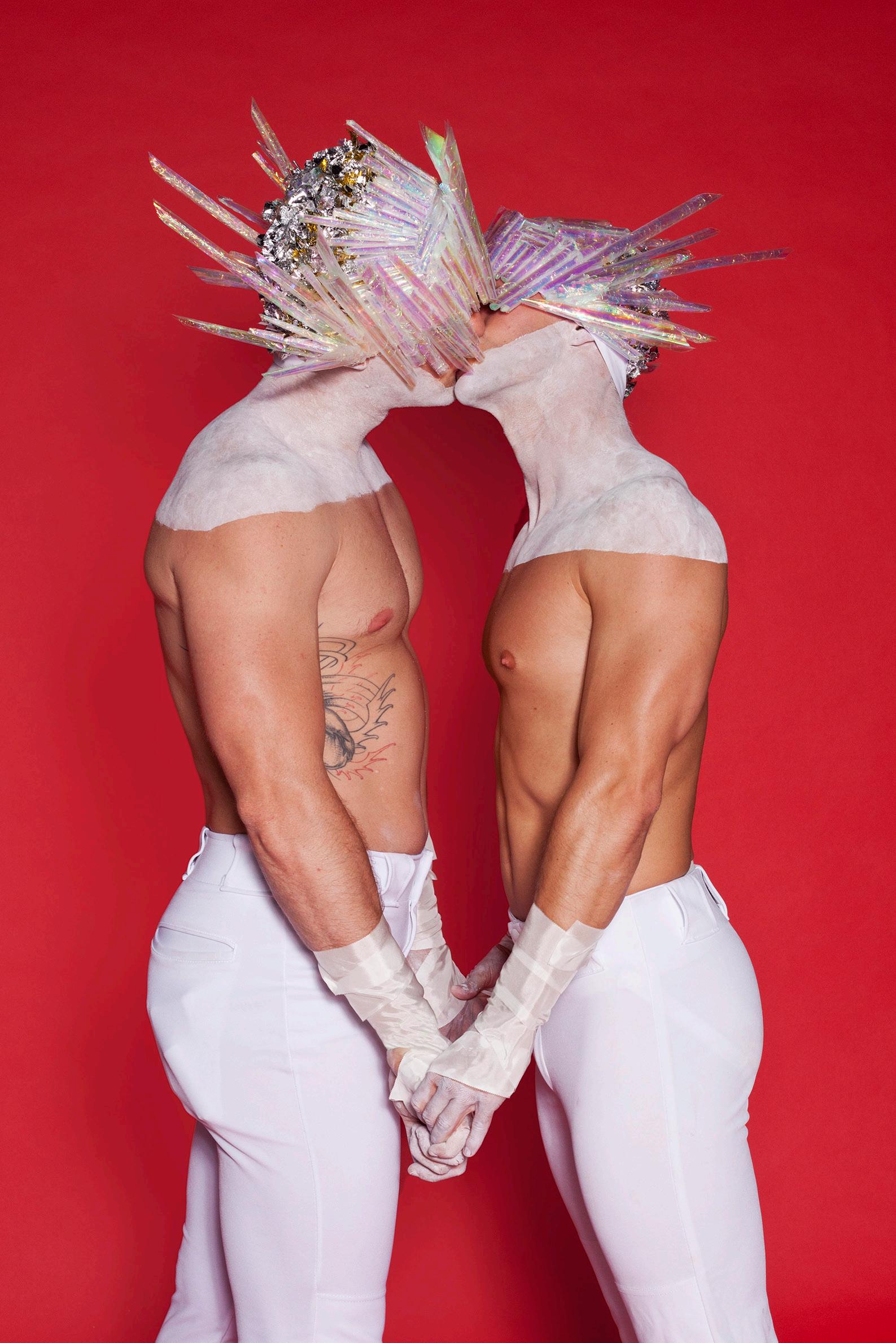
I’ve always wished there was a place where those like me could be free. Free to express their true authentic selves.
I’ve always wished there was a place where those like me could share. Share pieces of them. Share pieces of their art.
Their art is an expression of who they are. Their art embodies their voice. Their art speaks.
Their art speaks to those, at those, for those;
Those who feel they have no voice. With this space we remind them of their voice.
With this space we allow their voices to be heard, seen, read, felt.
With this space we listen, together.
Only then, when we take the time to listen, to really listen, is when we will learn, we will grow, we will love, them.
Charles Champagne Founder & Creative Director
Welcome to Volume 03
Queerbomb is Austin’s alternative pride. It is a community run organization that was founded in June of 2010. Queerbomb celebrates the communities unique and collective pride. It is a free event that includes guest speakers, artists, vendors, a procession through the streets of downtown Austin, and a dance party. Queerbomb encourages and celebrates unabashed pride. The concept of this series came from my own admiration of portrait photography. I am always looking to my mentors for inspiration and I wanted to pay homage to one of my favorites, Catherine Opie. She once said in an interview,
Queerbomb is Austin’s alternative pride. It is a community run organization that was founded in June of 2010. Queerbomb celebrates the communities unique and collective pride. It is a free event that includes guest speakers, artists, vendors, a procession through the streets of downtown Austin, and a dance party. Queerbomb encourages and celebrates unabashed pride. The concept of this series came from my own admiration of portrait photography. I am always looking to my mentors for inspiration and I wanted to pay homage to one of my favorites, Catherine Opie. She once said in an interview,
Queerbomb is Austin’s alternative pride. It is a community run organization that was founded in June of 2010. Queerbomb celebrates the communities unique and collective pride. It is a free event that includes guest speakers, artists, vendors, a procession through the streets of downtown Austin, and a dance party. Queerbomb encourages and celebrates unabashed pride. The concept of this series came from my own admiration of portrait photography. I am always looking to my mentors for inspiration and I wanted to pay homage to one of my favorites, Catherine Opie. She once said in an interview,
the streets of downtown Austin, and a dance party. Queerbomb encourages and celebrates unabashed pride. The concept of this series came from my own admiration of portrait photography. I am always looking to my mentors for inspiration and I wanted to pay homage to one of my favorites, Catherine Opie. She once said in an interview,
the streets of downtown Austin, and a dance party. Queerbomb encourages and celebrates unabashed pride. The concept of this series came from my own admiration of portrait photography. I am always looking to my mentors for inspiration and I wanted to pay homage to one of my favorites, Catherine Opie. She once said in an interview,
Cover + 3 Jeanette Muranyi 4 Randy Schmidt 8 Michael J. Morris 11 Khirsten Doolan 12 Matthew Arthur 14 Marleigh Flowers 16 Edward Schneider Back Cover Holly McGraw
Queer Bomb Austin
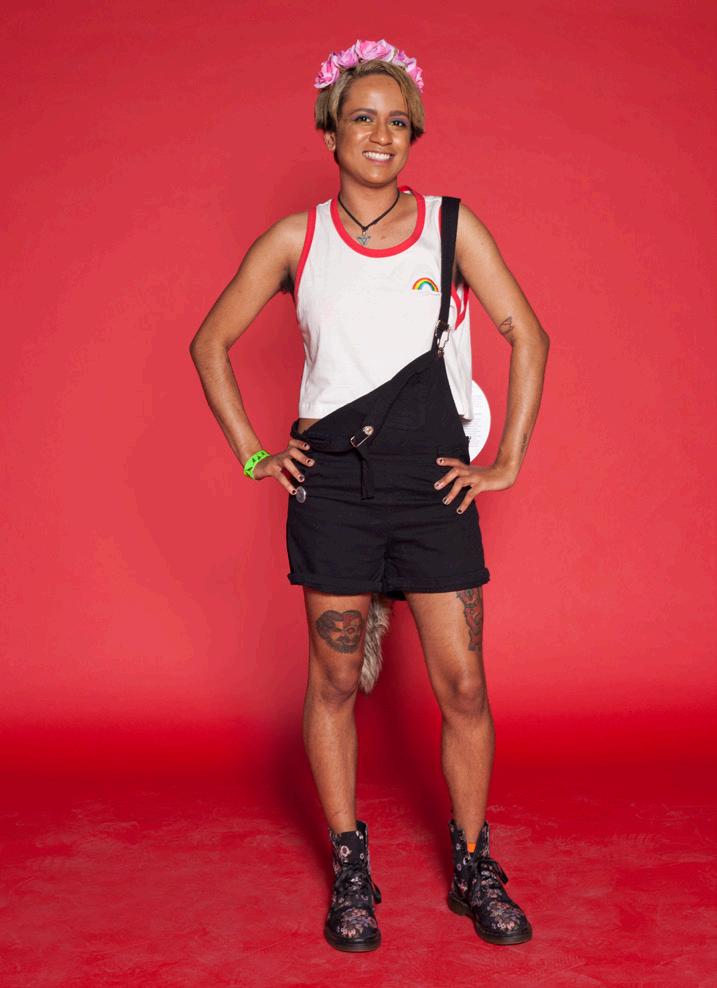 Photography Series by Jeanette Nevarez.
Photography Series by Jeanette Nevarez.
Queerbomb is Austin’s alternative pride. It is a community run organization that was founded in June of 2010. Queerbomb celebrates the communities unique and collective pride. It is a free event that includes guest speakers, artists, vendors, a procession through the streets of downtown Austin, and a dance party. Queerbomb encourages and celebrates unabashed pride.
The concept of this series came from my own admiration of portrait photography. I am always looking to my mentors for inspiration and I wanted to pay homage to one of my favorites, Catherine Opie. She once said in an interview,
“It’s really important for me that the people are just who they are in the picture. They can’t be pathologized. It’s not about what their gender is.”
I try to convey this freedom through the lens of my camera. The red backdrop was the perfect choice. It was bold, passionate, and gender neutral. It will be a fun challenge to think of a better idea for next year.

The purpose of the photo series was to document the attendees and share these images back to the community. The setup was comparable to a photo booth but I treated it like a portrait studio.

About three years ago I attended Queerbomb for the first time. Immediately I felt liberated and at home, accepted. I felt compelled to document this incredible happening and express my own creativity with my camera. I took environmental portraits of people and I felt comfortable as an artist. I was reassured of my own creative desires. When you are surrounded by unabashed artistic energy, you feel positively transformed.
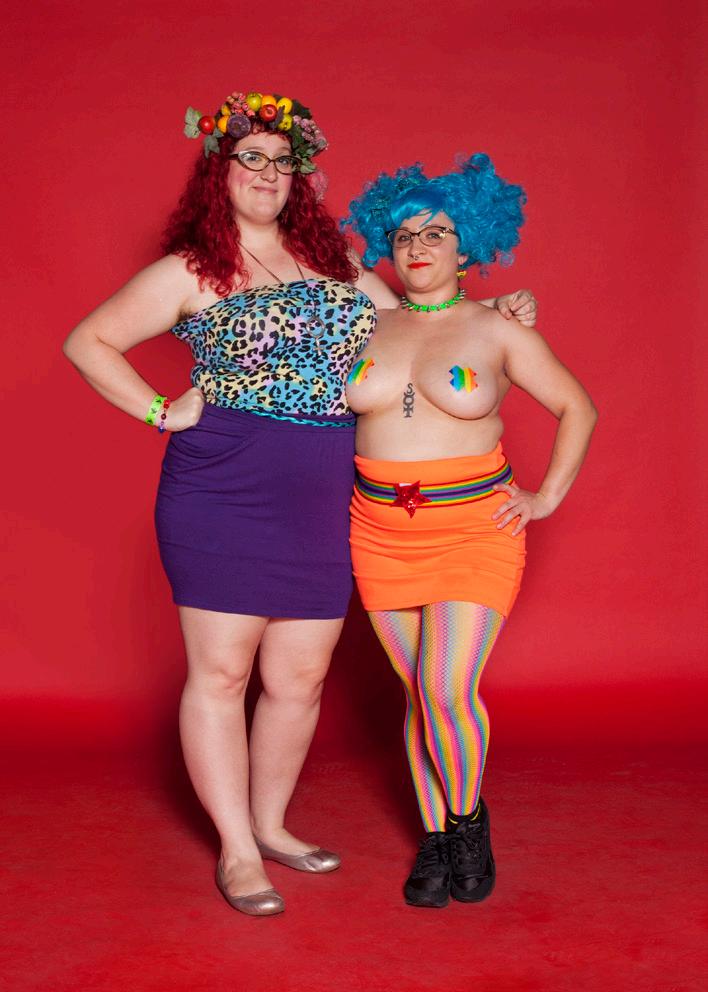
Without the LGBTQIA+ community I wouldn’t have been able to understand the intricacies of identity as well as the importance of understanding my own. As a Mexican American cis gendered woman, I never felt excluded from the LGBTQIA+ community. This communal understanding of inclusivity allowed me to understand things I wouldn’t have otherwise recognized. I was drawn to the transformative and progressive qualities in the LGBTQIA+ community. The “be who you are” mentality is important. It is important to be proud of who you are but also to know where you come from, and figure out how you can contribute.
I’ve had a long journey with photography and creating work that makes a difference to someone is very rewarding. The work that I do for Queerbomb is my way of giving back to my community.


Jeanette Nevarez is a 26 yr old artist and photographer who grew up in the border town of Juarez, Mexico. As a teenager, Nevarez moved to El Paso, Texas.
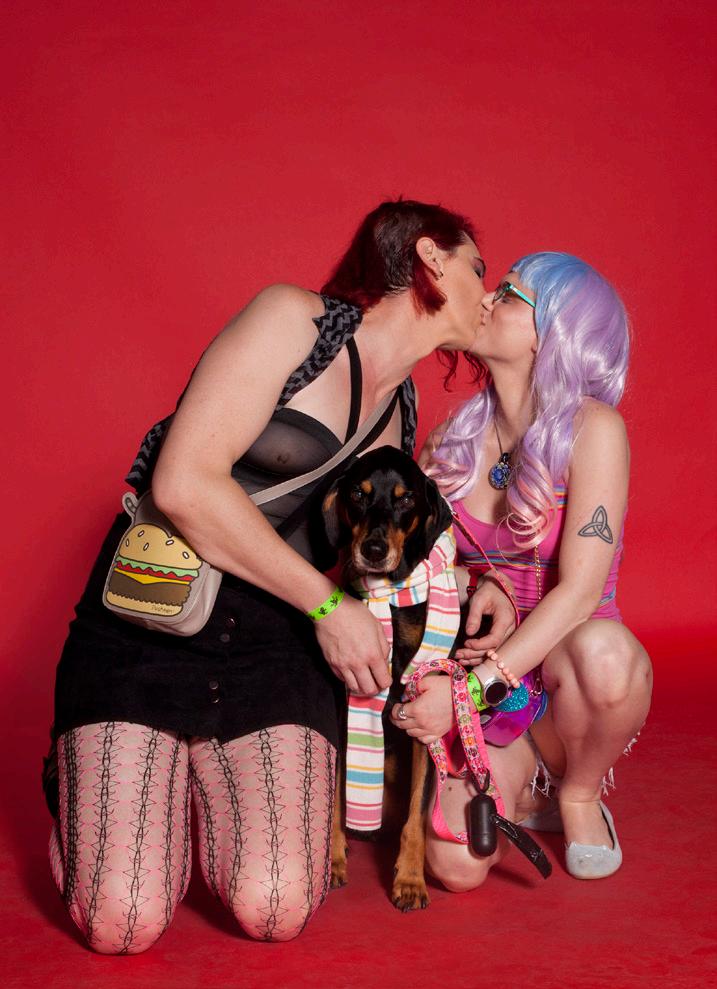
To see the full gallery and lean more about Jeanette, visit leurmag.com.
1.
Moving Colors: Many Selves In The Making
Michael J. Morris
2001
I’m a theater student just beginning to take dance classes at Baton Rouge Magnet High School. I grew up in Central, and the thing I remember most about my childhood is the library: moving between fiction and non-fiction, learning how to research questions and find answers of my own, I think libraries are where I began the process of figuring out who I was and who I could be. I spend a lot of time reading in high school, and I spend a lot of time journaling—about loneliness, about feeling invisible, and about the boys who seem perpetually out of reach. I spend just as much time praying—mostly praying about feelings for which I do not yet have words, trying to pray away the deep, aching sense that I am wrong. Baton Rouge is so full of dense humidity and religion that it feels like there’s hardly room for anything else. I began dancing at my church, when no one else was dancing, and maybe it was from all the church-talk of “sins of the flesh,” but I had never felt like a body before. These are the years I dance my body into being.
Ms. Martinez, one of the theater teachers at school, gives me a flyer for a modern dance performance called GREEN, a holiday show by a local dance company called Of Moving Colors Productions. Sitting in the audience, I feel like I’m glimpsing a world I never knew existed, a world to which I could belong. This world of dancing bodies sweating through shimmering green satin and misty lights is full of breath and weight, saturated with color. I don’t yet even understand what I’m watching, but I know that as dancers lean into one another and lift each other, as they press their knees wide and arch their spines, as they seem to swim through the space—skimming across the surface of the stage, hopping into the air, passing in and out of intricate formations—I feel the pull of a faraway homeland from right behind my heart. Each of OMC’s productions are themed around color: Yellow/Orchid/ Blue, Red, White, Lilac/Magenta, Green, Orange. Each show is intoxicating in its specificity, in the richness of its composition, where each dance in each show is somehow entirely unique and yet clearly belongs to this hue.
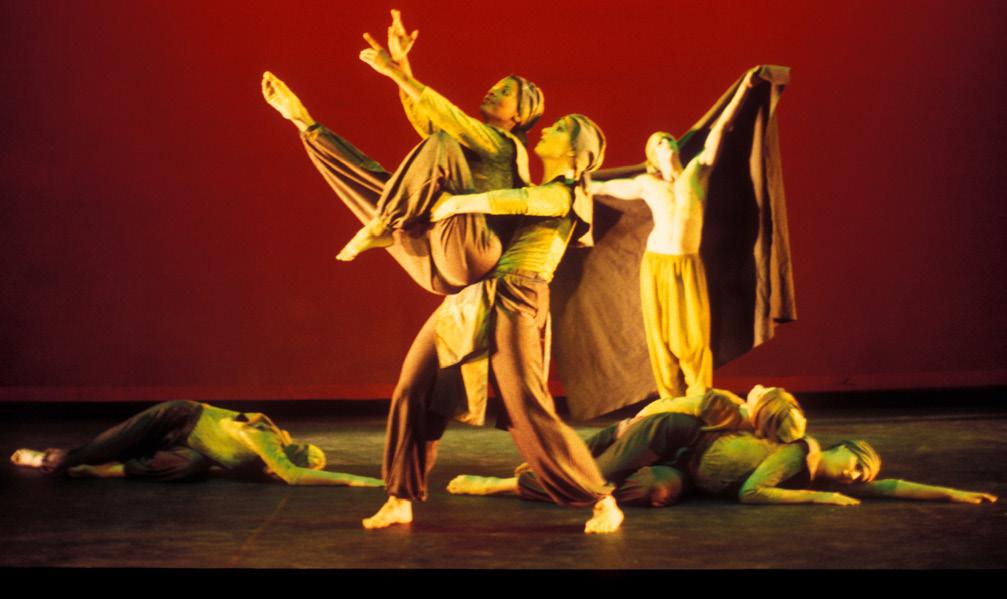
By the end of high school, I’m dancing with the company and beginning to know this world from the inside out: the long hours in the studio, the sweating and struggling with the choreography, pushing my body to do what it doesn’t yet know how to do, mesmerized as I watch Garland Goodwin Wilson, the director of the company, craft a moving mosaic of music and poetry and dance, seemingly from nothing. There’s no script or blueprint from the start; each production emerges as a dozen or so dances are made from scratch, and Garland figures out how all the pieces can fit together, how one transitions to the next, and what the show as a whole can become. I have never wanted to be like someone as much as I want to be like Garland.
2. 2007
Living in Mississippi is hard. I am a dance major at a Christian college; when I’m dancing, I feel like living, and the rest of the hours of the rest of the days, I feel heavy with dread and rage. My hair is long, and I wear draping, flowing fabrics and girl-jeans as if to say I dare you to even try to tell me who I cannot be. I fall in love with sensitive, artistic Christian boys who say they’ve never met anyone like me, who don’t know how to love me, and I spend a lot of time crying because I have never felt so alone. Every time I get in my car, I imagine just driving away, escaping into another life somewhere I can be someone else.
Near the end of my freshman year, I wander into a shop called New Vibrations in the arts district of Fondren, a purple and green store full of glitter and crystals and candles and tarot cards and books about magic rituals, Feng Shui, and all kinds of mystic traditions. The owner Karen, her sister Gwen, and Gwen’s wife Lori become like fairy godmothers to me. I learn about Goddess spiritualities, and I think coming to a Goddess is one of the first steps I’ve taken toward healing from patriarchy.
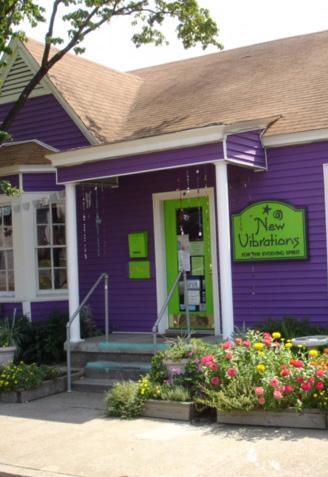
I take classes on reading tarot, I learn about crystals and auras and spells, and most of all I learn that I can be loved even though I’m queer. Gwen and Lori are the first out lesbian people I’ve ever known, and knowing and loving them gives me a sense of a life that is possible. I often think that I learned what it means to be queer from middleaged lesbian witches in Jackson, Mississippi.

Across the street from New Vibrations, I practice yoga at Butterfly Yoga, a studio that used to be a gas station in the 1950s, now seafoam green on the outside, bright orange and magenta walls on the inside. In yoga, like in dancing, I keep becoming a body. Inhaling, sweeping my arms overhead, feet rooted to the earth; exhaling, bowing forward from the hips, swan-diving into a deep forward fold. Inhaling, lengthening through my spine, feeling space between my ribs, belly drawing in to support me from the center; exhaling, stepping my feet to the back of the mat, taking weight into my hands and folding into downward-facing dog. I learn to “open to grace,” to open to the possibility of my own innate goodness. I learn that we are all emanations of the same Source, that all things are both many and One. Breathing and sweating on the mat in the Mississippi heat, I feel like I’m going to survive.
In college, I first encounter the work of feminist porn icon Annie Sprinkle and her partner, artist and professor Elizabeth Stephens. They are in the middle of a seven-year performance art project called the Love Art Laboratory, in which they commit to exploring, generating, and celebrating love. The Love Art Lab began as a response to the anti-same-sex marriage movement and our culture of war and greed; they teach me that sometimes the most effective form of artistic protest is to create that which you want to see more of in the world. Create the world in which you want to live. Each year of the project is themed around a different color corresponding to one of the seven major chakras. Red and orange and yellow and green, each year Annie and Beth stage elaborate performance art weddings in which they renew their vows to one another and create art inspired by the themes
and colors associated with each chakra. Their work feels like Of Moving Colors in Baton Rouge—the queer, San Francisco, performance art version, really different but also somehow the same. When I look at photos and videos of their work—big and bright and colorful and queer—I feel so full, as if the horizons of where I am are opening out onto a world that I could be a part of.
Photo by Billy Wilson
• OMC’s production of Green.
Photo by Karen Parker • New Vibrations.
It’s a chilly, foggy December morning in San Francisco, and I’m making my way up to Bernal Hill for the Love Art Lab’s White Wedding to the Sun, the closing ritual to Annie and Beth’s seven-year performance art project. I met Beth and Annie in 2009, a year after they came out as ecosexuals and married the Earth in a Green Wedding in Santa Cruz, California. Then I married the Appalachian Mountains with them in a Purple Wedding in Athens, Ohio. Here we are again, gathering this time to marry the sun. I wasn’t initially so sure about marrying the sun; I sunburn easily, and I don’t really like to be hot. But the more I thought about it, the more I warmed up to the idea: the sun is one of the longest relationships I’ve been in, and I don’t foresee a time when we’ll separate. On a very basic level, all life on this planet is a series of complex thermodynamic processes unfolding as the lives we live; we are the light of the sun, as is the food that we eat that becomes the bodies that we are. Annie and Beth invite us to eroticize this relationship; they offer ecosexuality as a way of making the environmentalist movement sexier and more fun, shifting the metaphor from “Earth as Mother” to “Earth as Lover.”
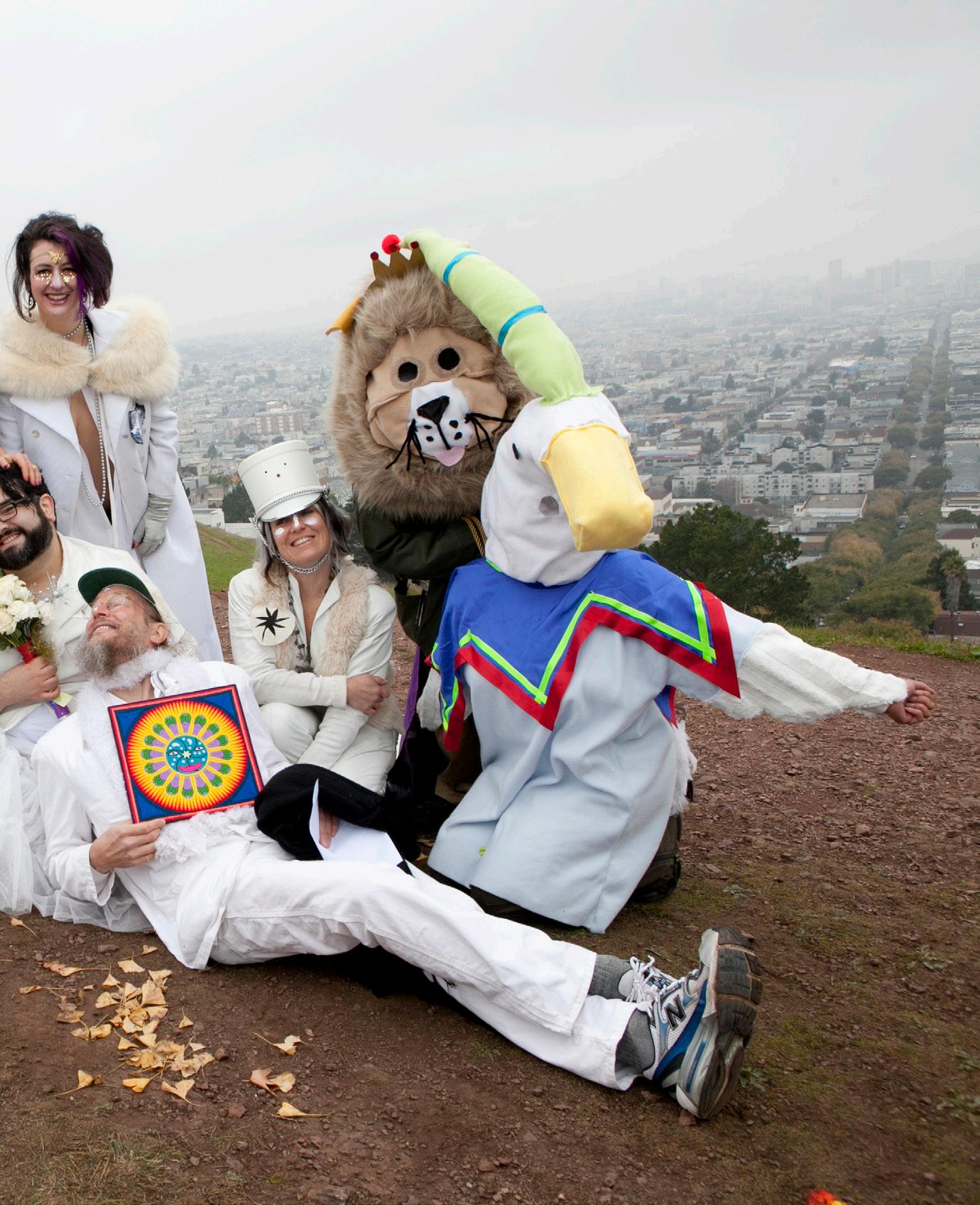
For me, ecosexuality is about recognizing our entanglement with the more-than-human world around us, appreciating the ways in which sexuality is already ecological, and the ways in which we might understand ecological relations as erotic. From the thousands of species of bacteria and protists and viruses and fungi that make up the microbiome of the human body, to the management of interspecies intimacies that we call “safer sex,” to the effects of birth control pharmaceuticals urinated into water supplies that are causing mutations of species in different ecosystems, to the condoms and dental dams and gloves and vibrator batteries and sex toys and tubes of lube that we throw away and that all end up in a landfill somewhere, to the direct relationship between viewing video pornography on our computers and tablets and energy industries, linking our sexual predilections and techno-stimulated orgasms directly to industries like coal mining and mountain-top removal: our sexualities have never been a purely
human affair. Sex and sexuality, even in their most mundane forms, involve our already more-than-human bodies mediating morethan-human sexual partners, incorporating more-than-human technologies with implications for a much larger world that is far more than human. Maybe if we understood sexuality as bigger than just reproductive sexual behavior or even bigger than just intercourse between bodies, we might care more for the planet, and we might find our way out of the suffocating gridlock of static sexual orientations and the gender norms they reinscribe.
When we get to the top of the hill, I perform a slow-moving Butoh solo, a dance with both the earth and the sun inspired by sunflowers and decay, rooted down into the ground, twisting and turning towards the sun. As I dance, Annie, Beth, and sex educator Joseph Kramer read a text about my body being entered and spread open by starlight and shadow, fucked in ass and mouth and eyes, becoming constellation and glacier, flesh becoming film, the sunlight shining through me. Another performer births a raw egg from her vagina, breaks it open, and anoints us all with the yoke. Someone else sings Leonard Cohen’s “Hallelujah.” A burlesque dancer spins fire tassels from her tits and toasts marshmallows from the flames hanging from her breasts. We take vows to love, honor, and take pleasure with the sun, and we vow to use sunscreen to facilitate intimacy in our relationship.
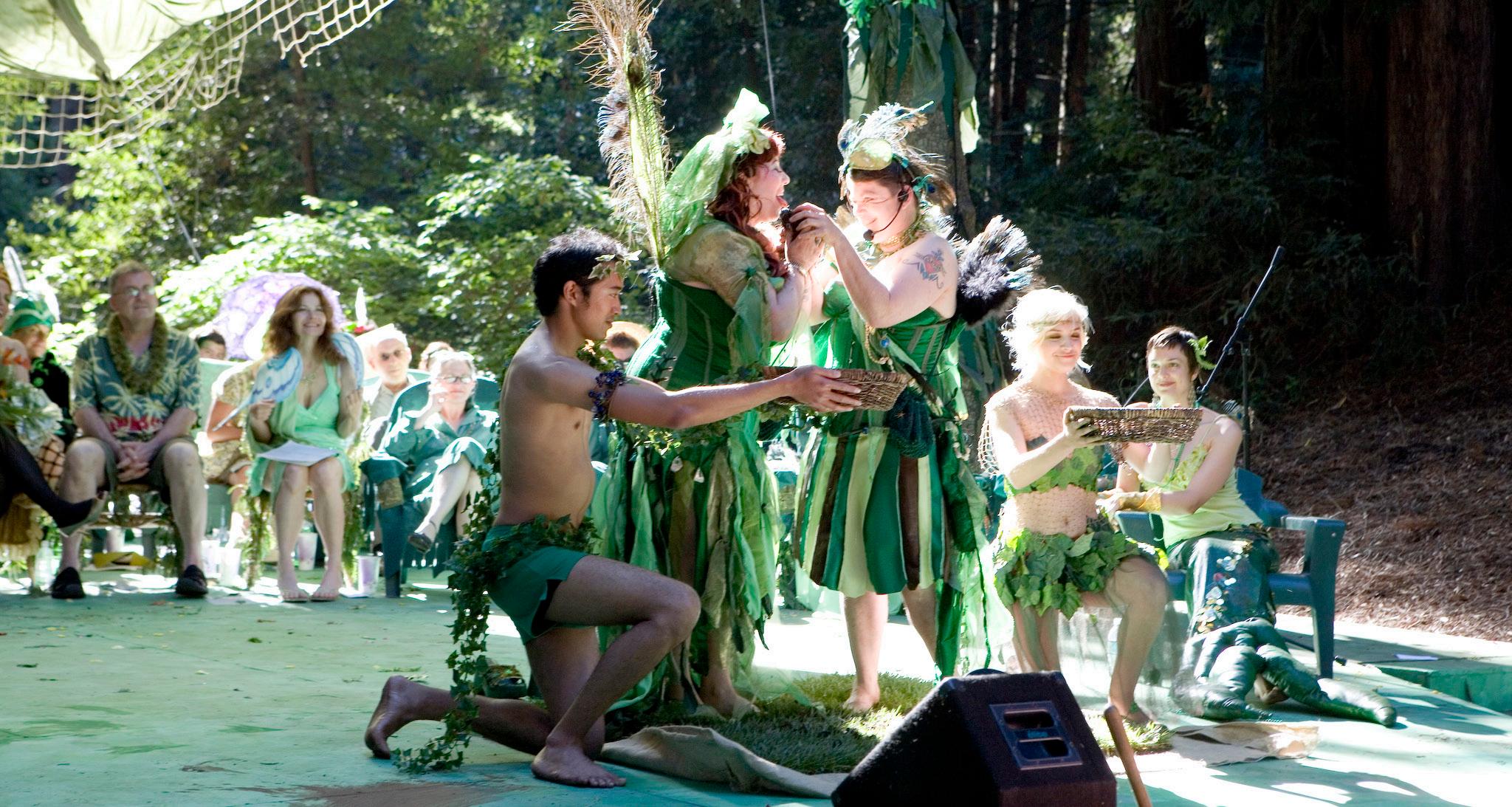
4. 2014
People drift into the studio, roll out their yoga mats, and begin warming up for Queer Yoga. We meet in a flexible community arts space called It Looks Like It’s Open in Columbus, Ohio. This isn’t our first space. For years we met in an art gallery, then a warehouse dance space, then the bar attached to a theater. I’ve been teaching this class for nearly four years, providing queer, trans, and gender-nonconforming folks with yoga classes that we attempt to make safer spaces—spaces where we try not to assume things like gender, sex, sexuality, race, age, ability, ethnicity, or any identity factors that come with a value judgement attached to it. We use gender-neutral language and try to make the practice accessible to anyone, whether they’ve been practicing yoga for ten years
or if it’s their first class. When I’m teaching, I emphasize appreciation for each body and our differences, rather than yoga being focused on conformity or uniformity or achieving a single ideal physical form. In a lot of yoga classes, there’s a kind of generic “look”—like the white ladies in spandex with flowing hair in beautiful poses on the covers Yoga Journal or all over Instagram. It can be difficult to not look like everyone else or to be a minority in a space; it can be difficult to feel like you belong when there aren’t many or any other people like you around.
I moved to Ohio to go to graduate school, and now I’m finishing my PhD in Dance Studies. My days are spent reading and writing, dancing, choreographing, and teaching. Queer Yoga has been my lifeline in grad school; having a community that is not directly associated with academic life helps me remember that the world is bigger than just what I’m doing right now. It’s also a healthy reminder that even though it can still feel really lonely or isolating to be a queer, genderqueer/nonbinary person, there are other people like me. I’m not alone. Maybe that’s part of why we show up and practice yoga together week after week: to remember that we aren’t alone.
One night after class, I’m at a small gay dive bar with Forest. We’re making out on the pool table when the DJ makes a joke about how both of us are “bottoms.” I say that I’m not a bottom, and he says, “Well, what are you then?” Forest looks at me and says, “Aren’t you everything?” We go home and spend the rest of the night fucking the way you do when you are everything.
5. 2016
Being back in Baton Rouge is always disorienting. I haven’t lived here for almost thirteen years. My grandmother died this week; I came back for her funeral, and while here, I’m performing with CoCo Loupe, Mina Estrada, and Rikki Willis in multimedia dance work we developed together called CKA: enough (2). It is the second in a series of performances that CoCo and Mina are producing called Currently Known As. Last week, news broke of the police killings of Philando Castile in Minnesota and Alton Sterling in Baton Rouge, the most recent in what seems to be endless
police brutality against people of color in the United States. As we prepare for the performance, I struggle with grieving the loss of my grandmother, rage at the social injustice in this country, and questioning how dance can be “enough” in times like these. This eventually becomes part of the performance, these struggles building into a text that I read at the beginning of the dance. My parents come to the show; they haven’t seen me dance in nearly a decade. My twin and aunt are here as well, as is Garland, who I haven’t seen in years. The performance feels framed by memory and time spent apart. It takes place at the Arts Council of Greater Baton Rouge, where my twin had his first solo exhibition when we were in high school, and where he later had a two-person show with his partner. This is the same space in which we grew up watching children’s theater productions put on by Playmakers. Now I’m back here dancing with CoCo—who was my first modern dance teacher at The Dancer’s Workshop when I was in high school, who became one of my dearest friends in Columbus, OH—in front of my family of origin, in front of Garland, in front of a room of people, some of whom seem visibly queer.
I read the text at the start of the dance and ask how can dance be enough when black and brown people are murdered by the police with impunity, when each year becomes the new deadliest year for reported murders of transgender people in this country, when the climate is collapsing in ways that somehow remain deniable by politicians, when earlier this summer 49 LGBTQ people were murdered at Pulse Nightclub in Orlando. How can dance be enough?
I am not the same as I was when I lived here. The differences are more than just age, sexual orientation, and gender identity; they are also about how I understand the world. Growing up in Baton Rouge, I didn’t see or recognize systemic racism in this country and I could not acknowledge the existence—let alone the oppression—of trans and queer people. Back then, dance was a kind of escape route, a window into another world, a bigger world that I did not yet know. Now dance has become my way back into the world in which I am living.
3. 2011
Liz
Highleyman • The
White
Wedding to the Sun
Photo by Lydia Daniller • The Love Art Lab Green Wedding to the Earth.
I’m spending a month this summer in San Francisco for an intensive yoga teacher training at the Laughing Lotus Yoga Center. Every day, we spend hours practicing postures, breathing techniques, meditation, chanting, and discussing yogic philosophy and social justice. The chakra system is the foundation of this particular approach to yoga, with each class moving through sequences of postures that correlate to the seven major chakras, their qualities and colors, and every class reminds me of the Love Art Lab. In the studio, brightly colored symbols are painted on the warm, yellow walls, each depicting one of the chakras and deities with whom they are associated.
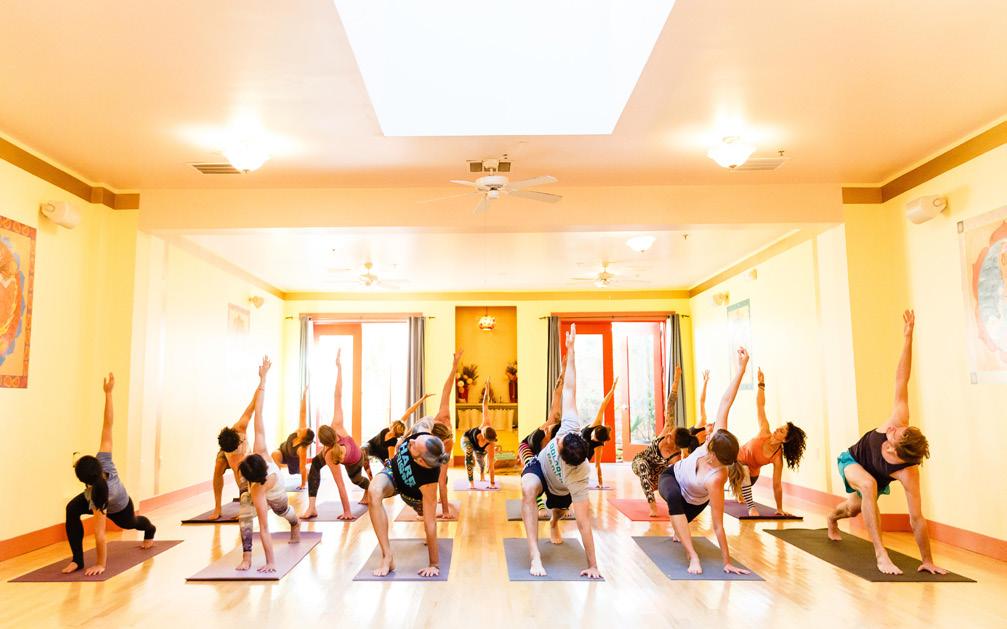
7. Today
Every day I invoke the Goddess, an affirmation of the feminine in a world that despises femininity. I do not worship a divinity who is separate from me or from the world; rather, I consider sacred all those parts of our world and myself that have been oppressed by hetero-patriarchy. When I honor the Goddess, I honor women burned as witches, trans women murdered by their boyfriends, sex workers killed in alleyways, villages of women raped as a tactic of war, the earth that is feminized and exploited as a resource for mankind, and the genderqueer femmes harassed for moving through the world in ways that defy the supremacy of masculinity. I honor the powerful women—Garland and CoCo and Karen and Gwen and Lori and Annie and Beth among a whole pantheon of others—who have inspired the life I’m living. That’s who I mean when I say Goddess. I invoke Goddess as an act of recognition.
But that’s not to say that I feel fully recognized. I am misgendered constantly; even at a yoga training in San Francisco, people regularly use the wrong pronouns for me. The homeless people asking for money on the street stammer, “Can you spare any change, miss…I mean, uh, sir…uh, ma’am…” Even though I work to create queer spaces to remind myself and others that we are not alone, isn’t that itself a reminder that sometimes I still feel alone?

What’s different now from earlier times in my life is that now I recognize these feelings are often effects of feeling out of place in a world that does not always make space for all of us.
It’s Pride season, and as I leave the studio each evening and walk home through the Mission, the rainbow flags everywhere cite the early gay rights movement, and for me, they also echo the colors and themes of the chakras, carrying the wisdom of the work I’m doing in this training out into the streets. If the rainbow flag is a celebration of the diverse spectrum of identities, experiences, and expressions within the LGBTQ community, perhaps the chakras are a reminder that diversity and difference are part of our individual selves as well: we are all so much more than any one, singular, static self. Each of us are dynamic assemblages of who we have been, who we are, and who else we might become. We are full of shifting facets and mobile potentialities, ambivalent desires, contradictory perspectives, and emerging possibilities.
I didn’t expect to be 32 years old with a PhD teaching at a small liberal arts college in Ohio. When I left Baton Rouge when I was 18, I thought I would get my BFA in dance then join a dance company and tour around the world. Along the way, life opened to different pathways, unanticipated trajectories and passions. Now I teach modern dance, yoga, writing, and transgender studies; I travel around the country and world speaking at conferences about dance, performance, pornography, and ecosexuality. Every semester, I choreograph new dances with students, and when I have time, I perform as a queer burlesque dancer in sexy bars with small stages around Columbus. My loved ones and chosen family are spread around Columbus, Pittsburgh, Richmond, Chicago, New York, San Francisco, Santa Fe, and beyond. This is not the life that I expected because I did not know that a life like this would be possible. Each step of the way, new contexts and situations introduced new potentialities for who I could be; who I was becoming was always in the making, and it still is. But we all come from somewhere. My roots are in libraries and magnolia trees, thick southern air and long walks in country pastures. And like the chakras that rise from red roots to a brilliant white thousand-petaled lotus, where we began does not determine and cannot predict all the ways in which we might blossom and unfold. The processes of self are made up of so many departures and returns; when we come back to where and who we were, we might find that it and we are no longer the same. Inner and outer worlds constantly fold into each other, and in ways we can and cannot know, both are changed again and again through their enfolding. It’s not as simple as, “It gets better.” When I sit here with my younger selves, I cannot promise happiness. What I can promise is more: more complexity, more differentiation, more possibilities, more fractures and fragments, more uncertainty—in other words, more life.
Michael J. Morris is a choreographer, performer, writer, and educator from Baton Rouge, Louisiana, living and working in central Ohio. They are currently a Visiting Assistant Professor at Denison University, where they teach in the Department of Dance, Queer Studies, and Women’s and Gender Studies. Michael’s writing has been published in The Oxford Handbook of Dance and Theater, TDR: The Drama Review, Choreographic Practices, Dance Chronicle, and the European Journal of Ecopsychology. Michael holds a PhD in Dance Studies from The Ohio State University. Find more Michael @ michaeljmorris.weebly.com/
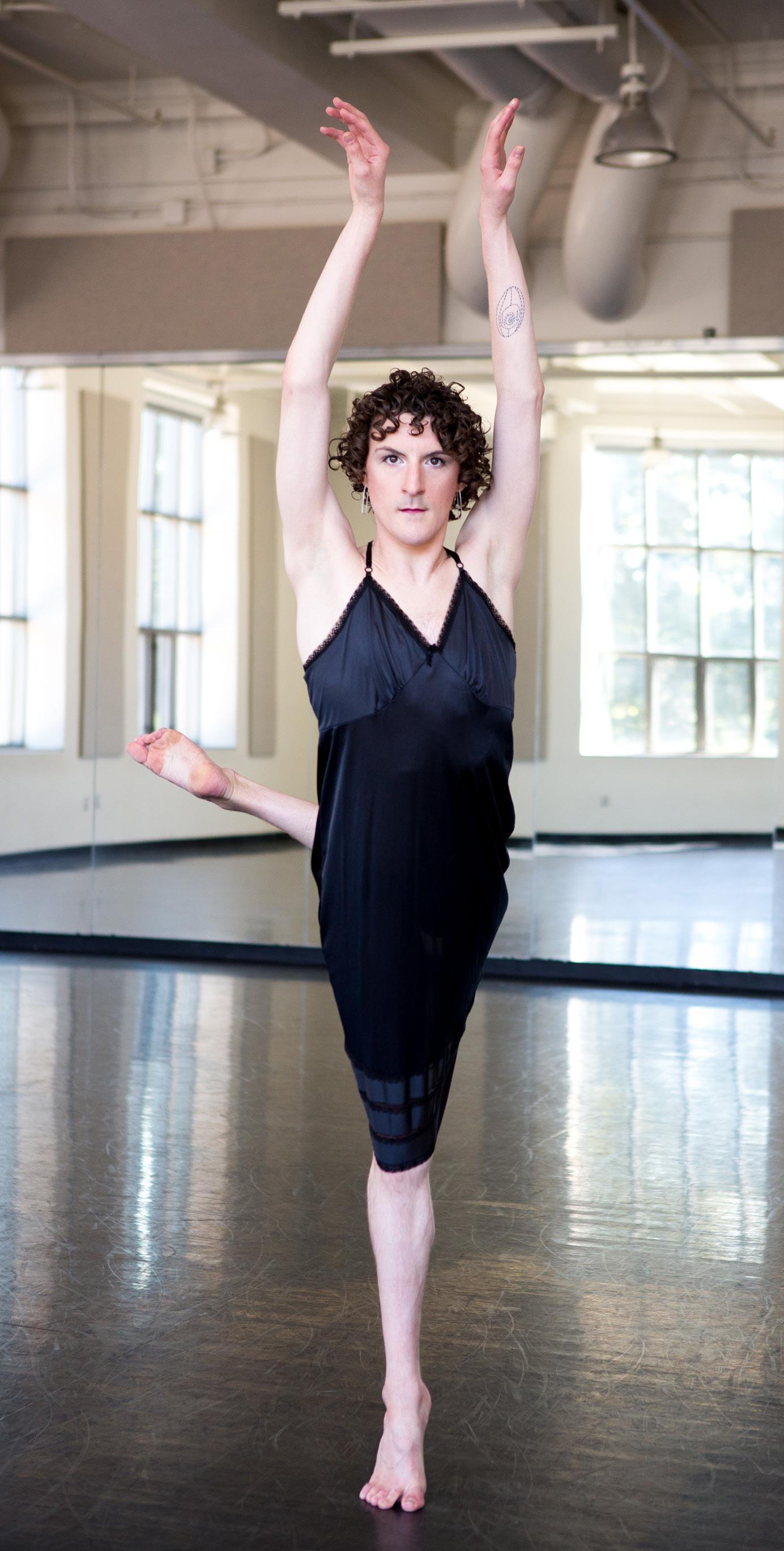
6. 2017
Photo by Nousha Salimi • Laughing Lotus Yoga Center in San Francisco.
Photos of Michael J. Morris by Megan Leigh Barnard.
Hers Poetry by : Khirsten Doolan
I was terrified when you brought me home held nervously in your soft hands. When I slid up your legs over scars and fading bruises for the first time, I felt worthy despite teal legs and periwinkle pockets.
It became routine to fit around your curves, nestling against your skin and kissing the tattoo on your hip, you tugging gently to guide me upward to hide all the parts of you I found perfect.
I loved it, crawling over you to shield you from a world uneasy with the way you wore me spilling down your thighs. I eagerly waited for the moment you’d reach out to me with loving fingers, saying “You’re mine.” Nothing lasts.
There you were in stiff denim devoid of factory flaws looking in a mirror with your full lips in a thin line and your hands tugging unsurely at the ill-fitting waistband. It swallowed you whole, all take and no give, while I watched from the closet where you put me away in lies and darkness.
Khirsten Doolan, a native of Louisiana, is a writer of queer poetry, fiction, and screen who is currently attending University of Louisiana at Lafayette for a PhD in literary studies.
The Cue in Queer
Matthew Arthur
 @mattingsworth
@mattingsworth
“Our mirror doesn’t always reflect the truth. Our identity hinges mostly on our social mirror ( basically how individuals respond to us). Image formation develops based on these experiences from gender roles and sexuality, to physical expectations and social responsibilities. From how I understand it, the average human goes through life giving off cues to their social circles, and they form opinions & identifiers about themselves based on others’ responses to those cues. If you think about it, it sounds really fucked up and completely dangerous, but it was in my own life.
When the carpet didn’t match the drapes or when the social expectation did not match what was going on in my own head, fear and shame began to dictate my life like so many other queer individuals. I became desperate and truly driven to understand and become okay with this idea of my own identity. Not talking Tanger, but this bitch needed an outlet. I found that in art.

From fashion design & photography to installation, sculpture , and painting everything I set my hands and mind to do is filtered through identity. Whether it be exaggerated like my self portraits and fashion design, or vulnerable like my writing and painting. If you boil it down, my work is always centered on the distortion, deviation and distribution of cues in order to expose the truth in the false narrative. To live authentically, boldly, and unabashedly is an act of violence against ignorance and hate; and that is putting the cue in queer.
I answer to Mat, Matthew, Mattingsworth, or maybe some other choice words if I know you well enough. I’m a 35-year-old, New Orleans-based creative. I definitely identify with the term artist, but I find myself less and less using that title as an introduction. I have worked across several different mediums over the years, but I currently spend most of my time doing soft-sculpture, fibre installations, and self portraits. New Orleans as a vessel and as a living thing inspires almost all of my work. Every new corner I turn, I am met with something that charges me with life, and I like to share that life through my work. Now more than ever, we need creatives to help inspire, help heal, and help bring back a bit of humanity. With that looming responsibility, I fully intend to switch to accounting. I produce all my pieces keeping in mind something my old mentor always said, “if you can’t make it good, make it big; and if you can’t make it big, make it red.” I try to make it good and big, because I’m not a fan of red.



I love my friends, family, champagne, mardi gras parades, dancing like no one is watching, and laughing until I can’t breathe. I wish I could fly, death drop, speak French, and eat tacos everyday. I hate injustice, ignorance, and impatience. I’m scared of going to the cleaners alone, dropping my phone in a toilet, and yellow cars. I’m embarrassed that I was on Project Runway and that I sent this version of a bio.”

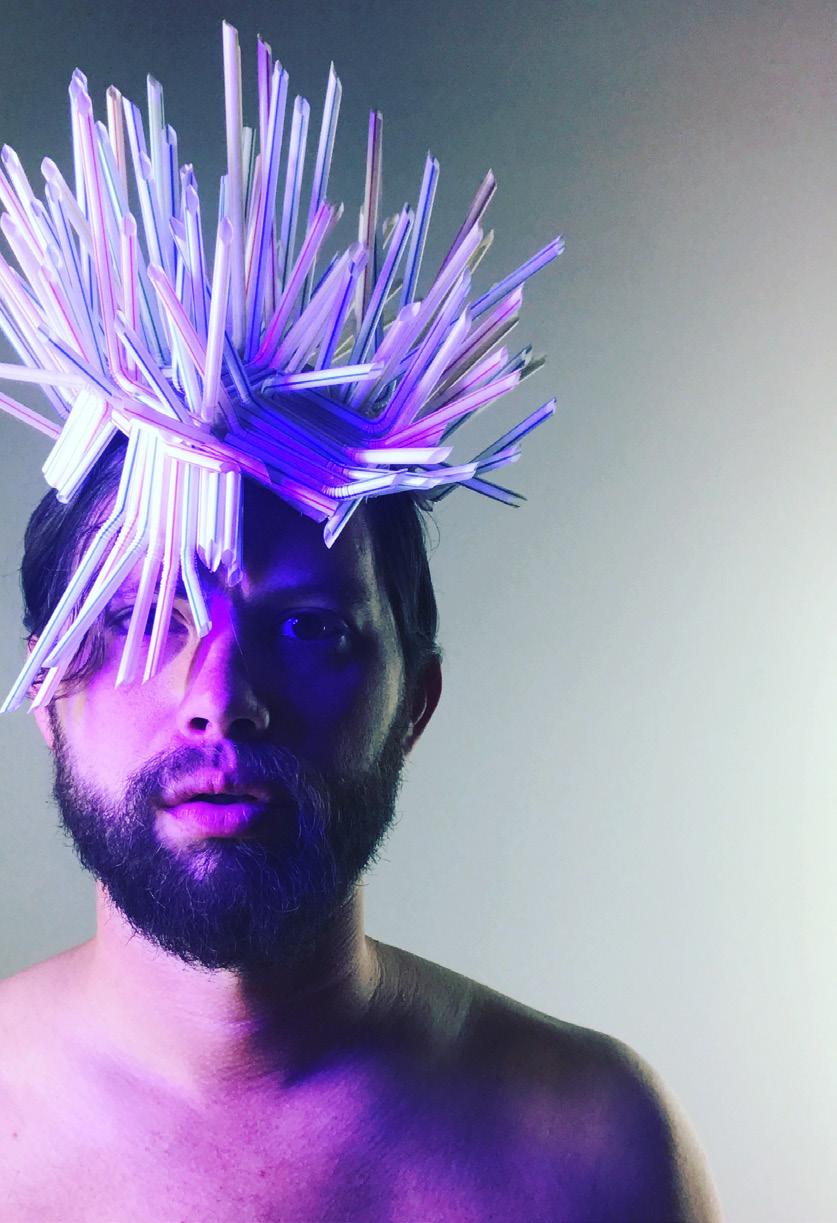
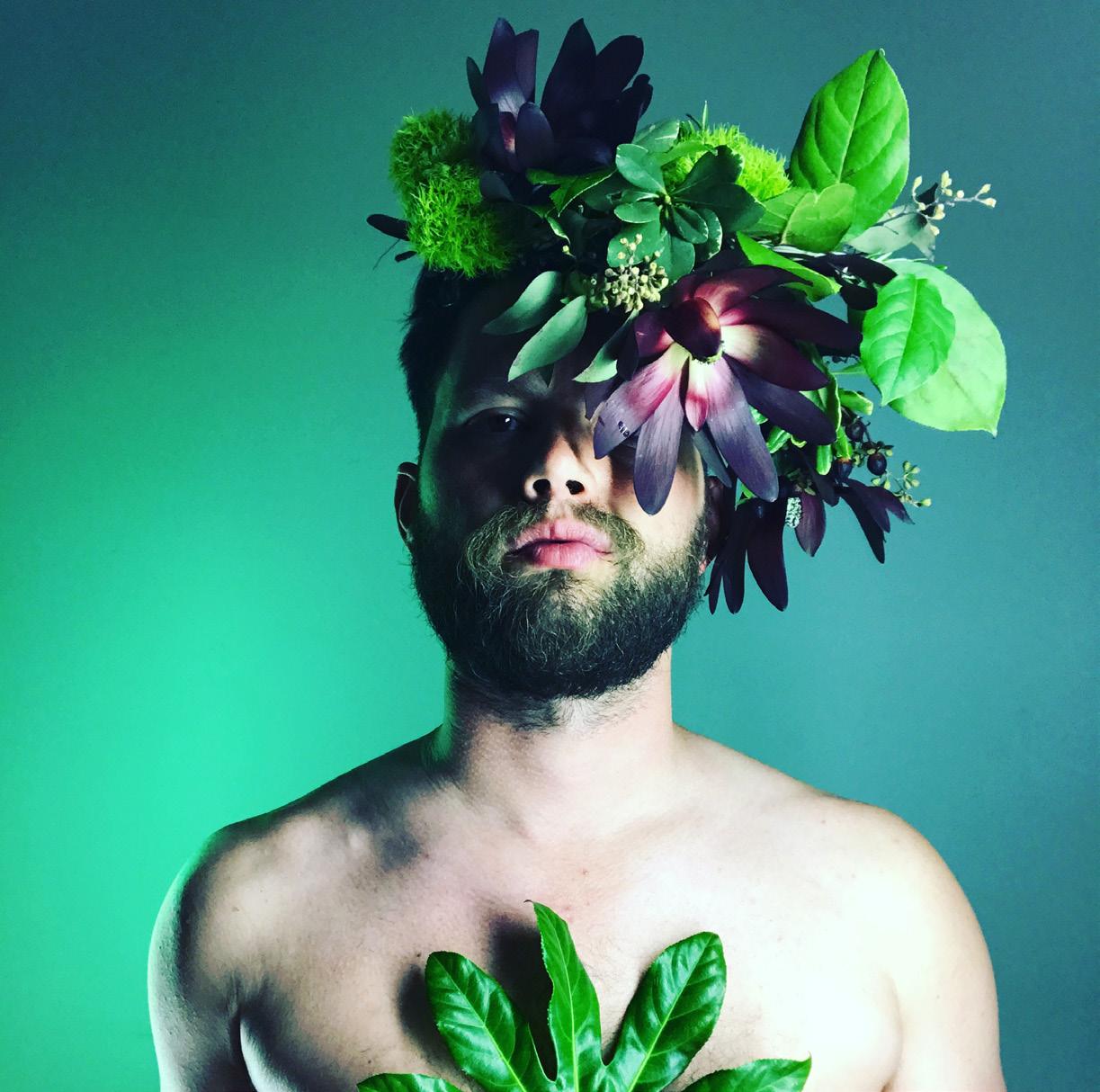

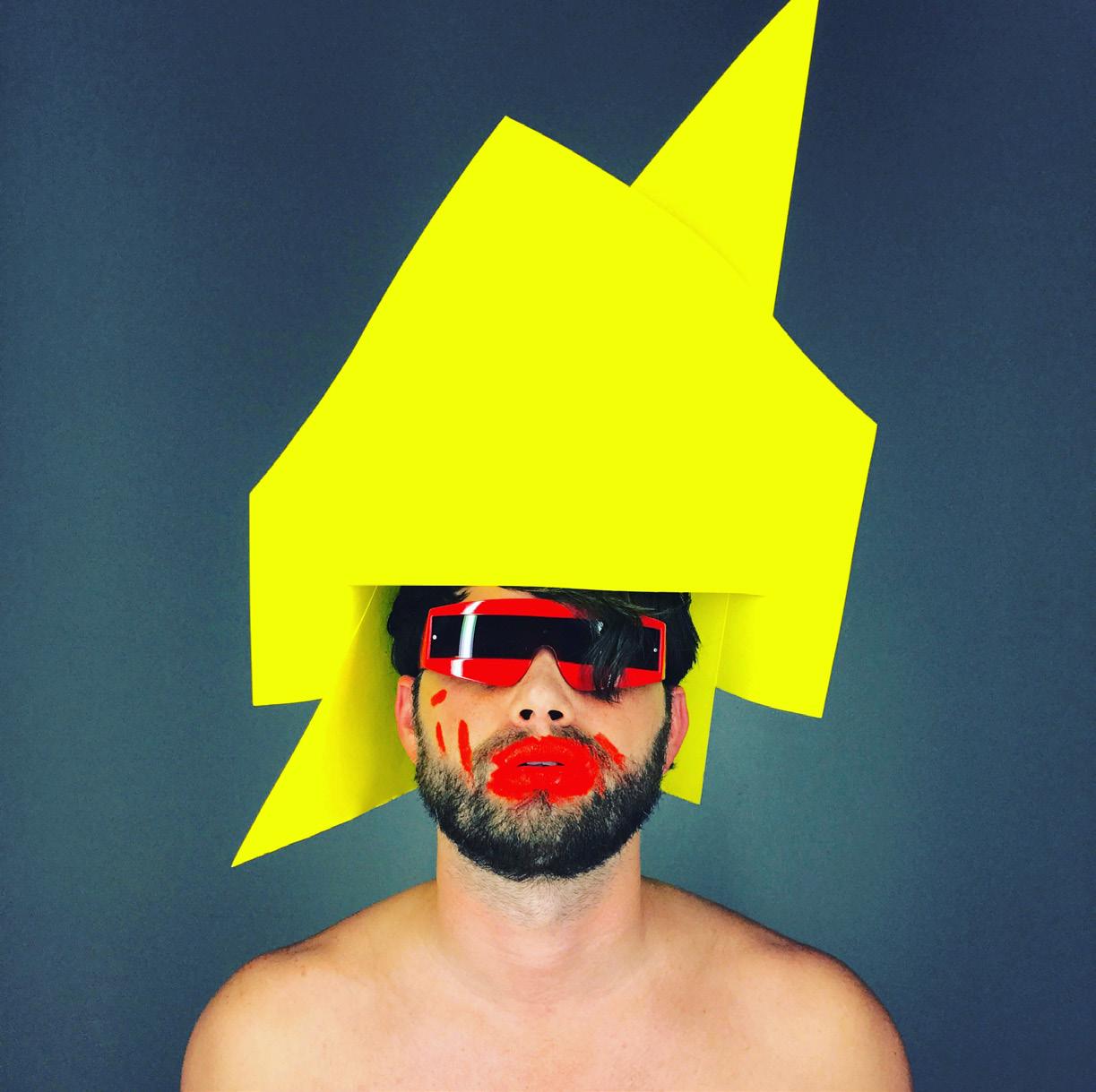
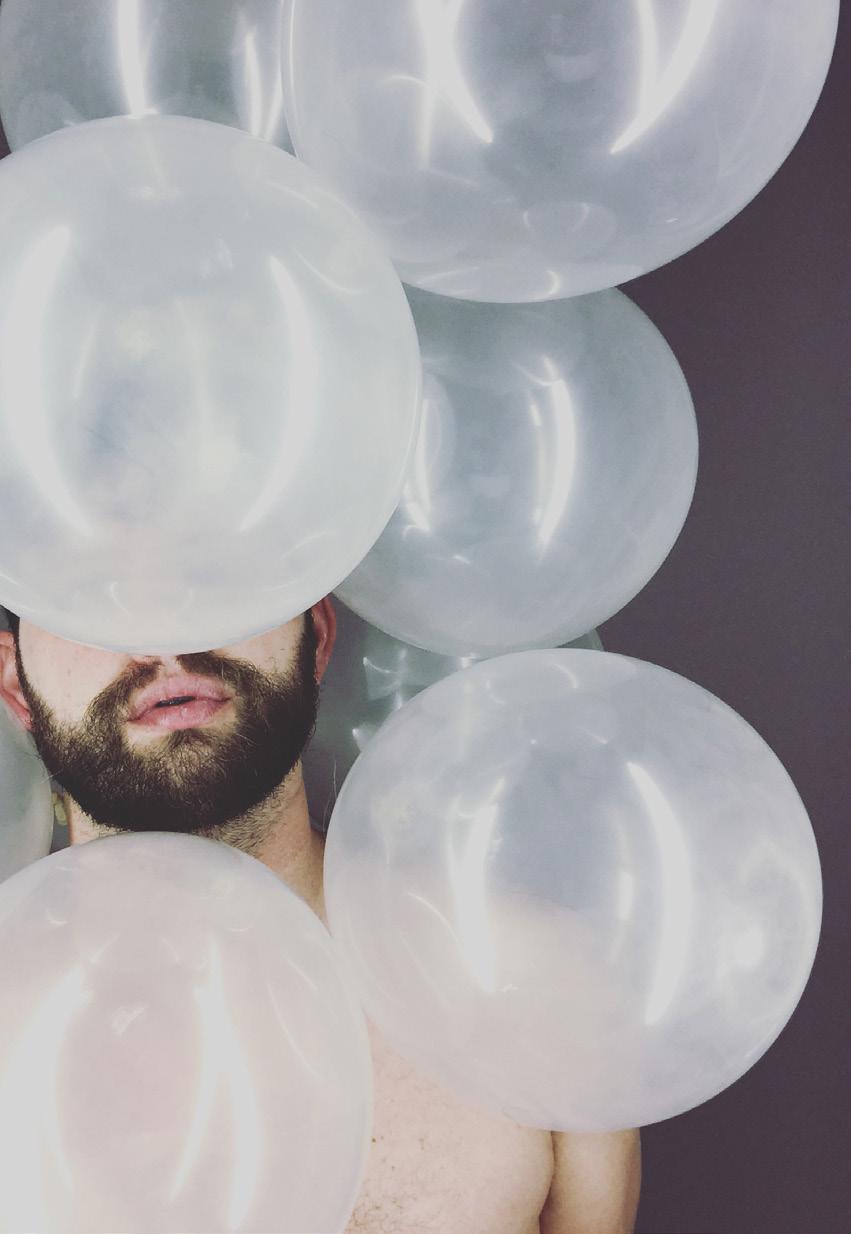
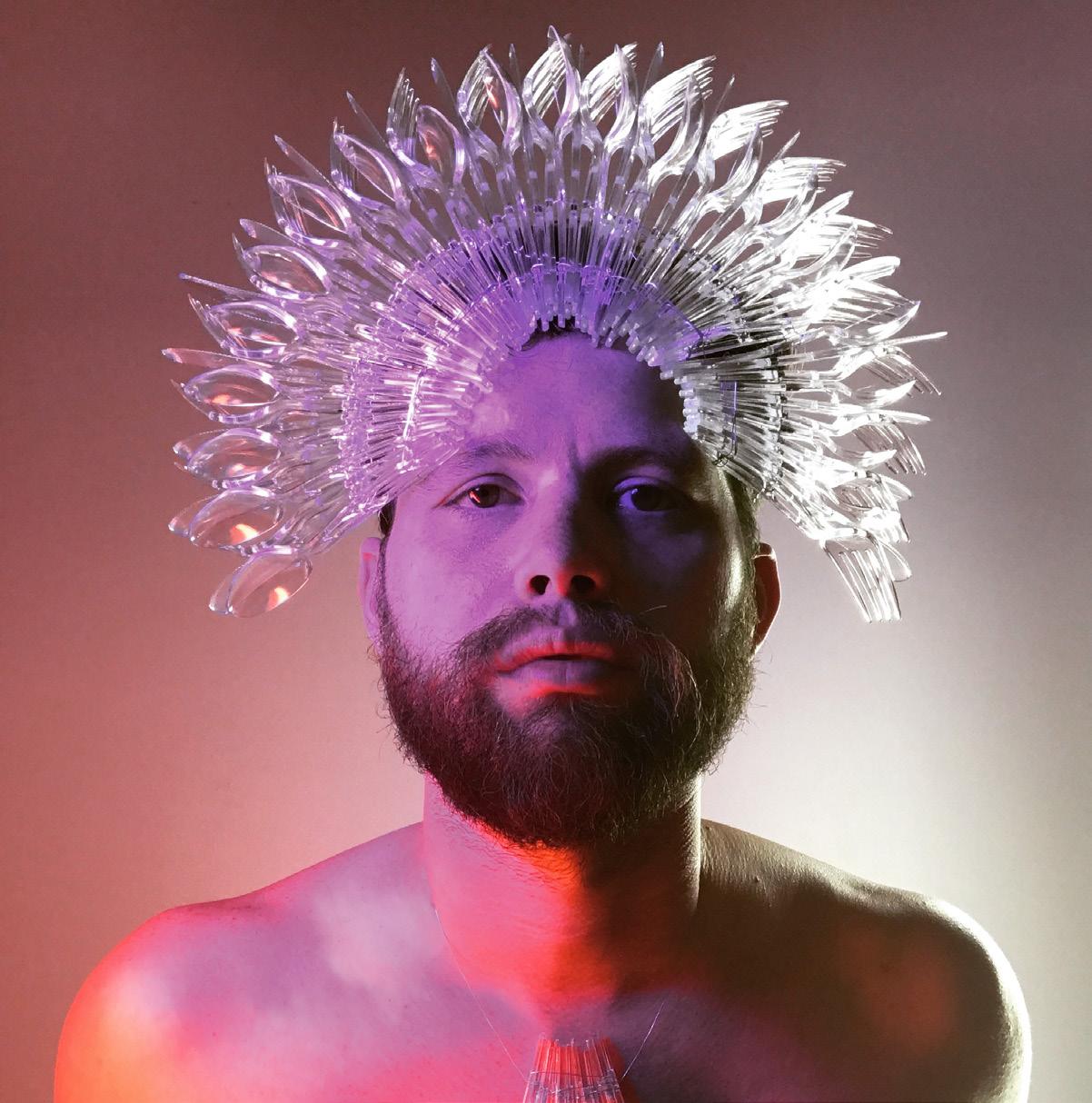
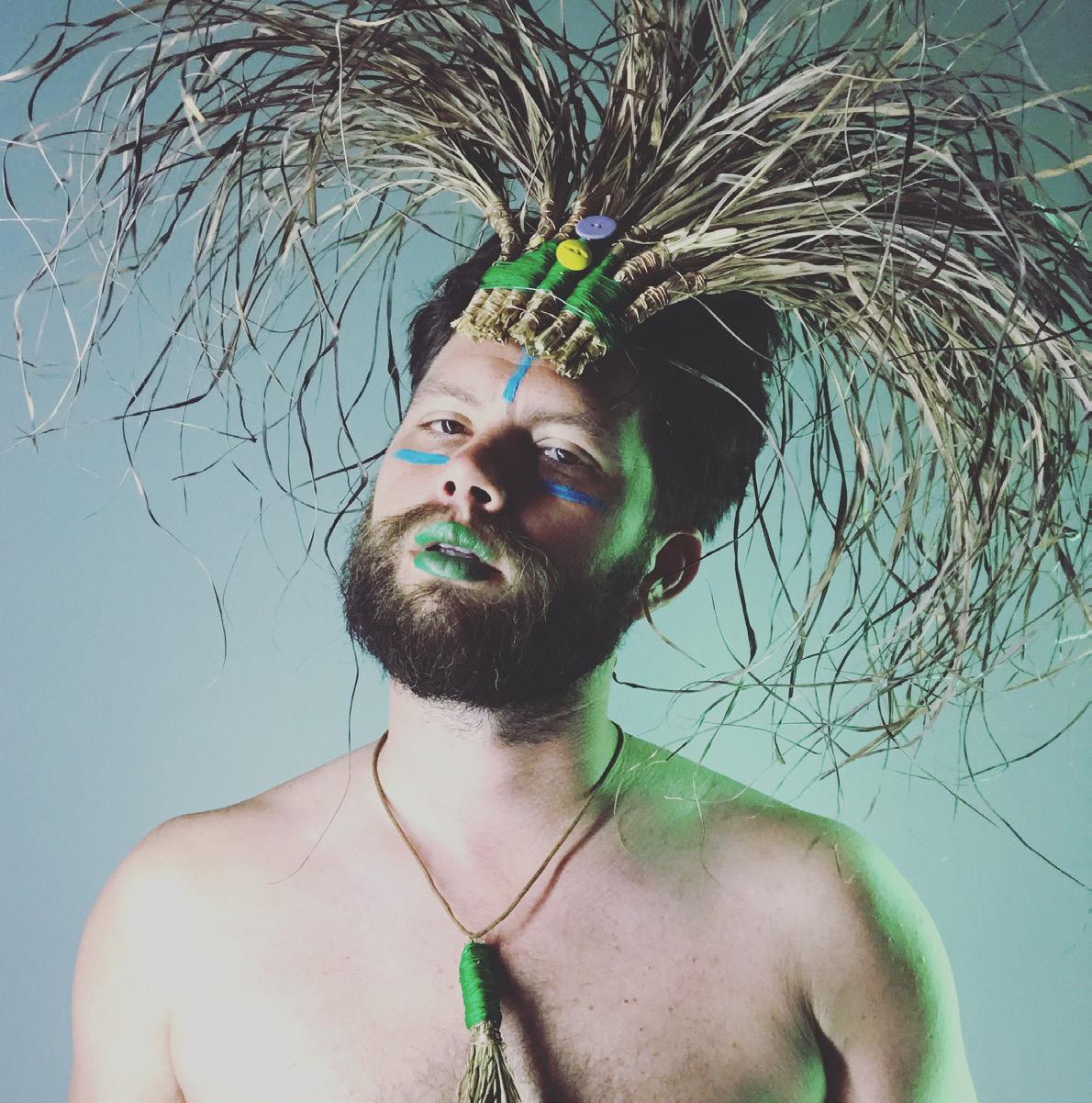
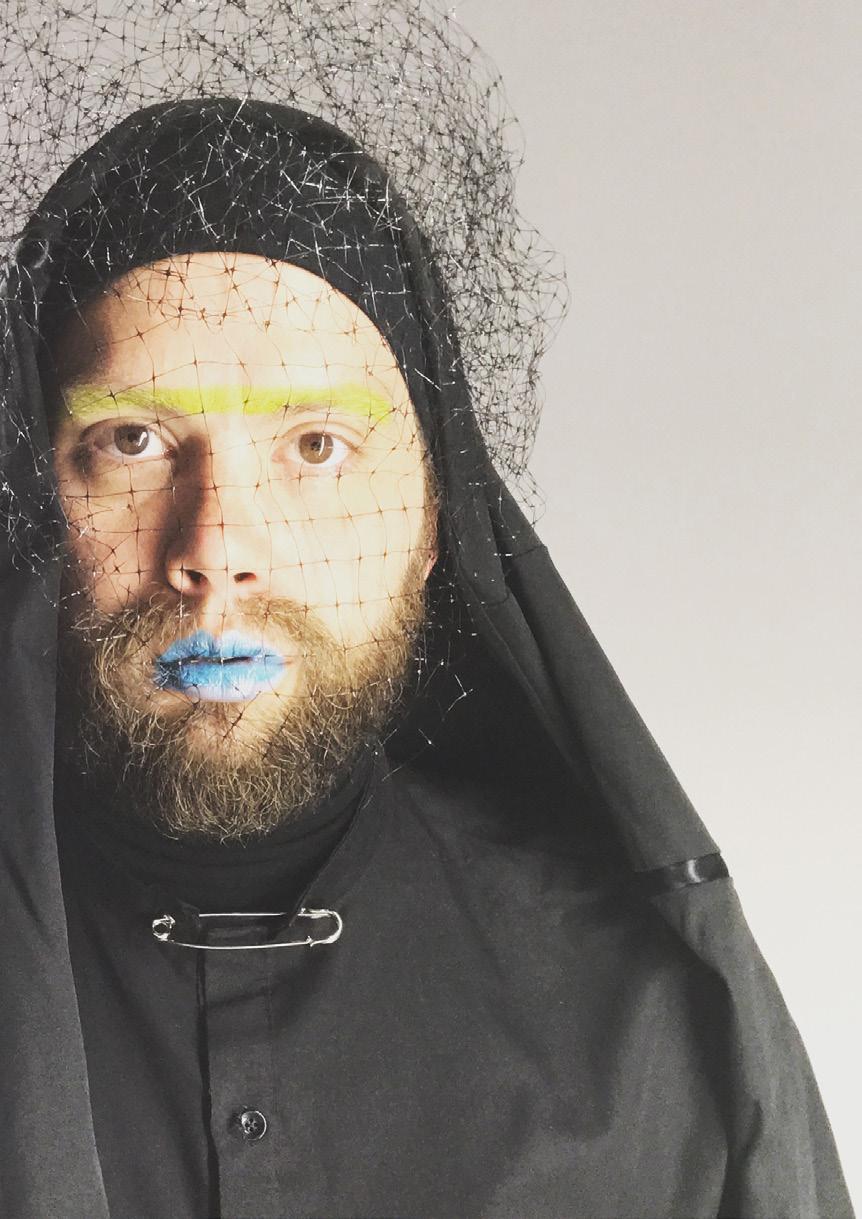
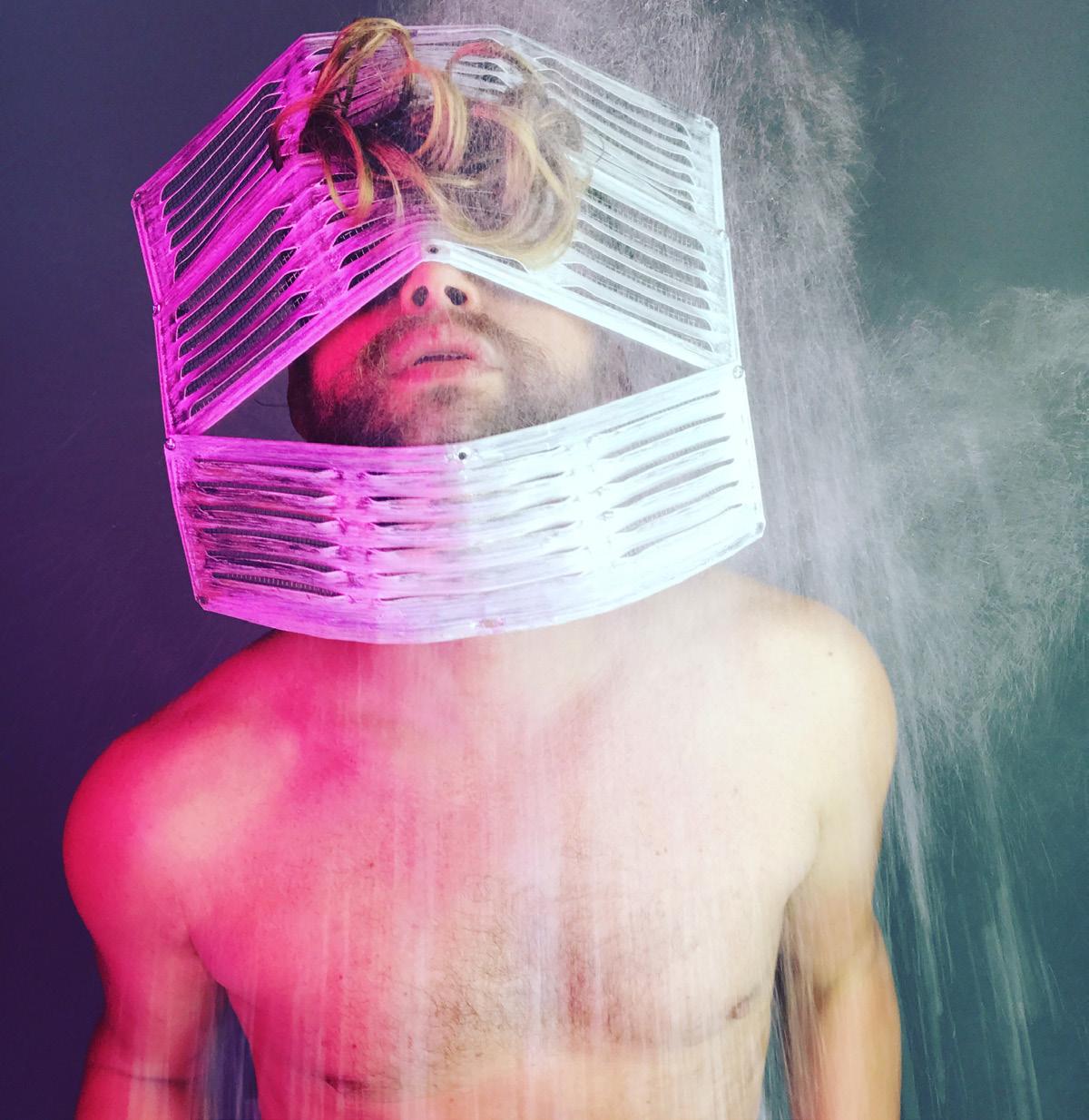



Randy Schmidt Photography
“Vulnerability in art has always been a challenge for both of us, especially because we’re living in a time that focuses so much on the exterior. We wanted to do something that felt real, but beautiful. It was about capturing a moment that didn’t require to be anything other than who Day really is and letting world know that its OK to embrace yourself exactly the way you are, that being yourself (flaws and all) is enough”
- Day Rankin and Randy Schmidt
Randy Schmidt is a New Orleans based food and portrait photographer that lives for Mac n Cheese on the daily.
To see more images from this photo series, please visit leurmag.com

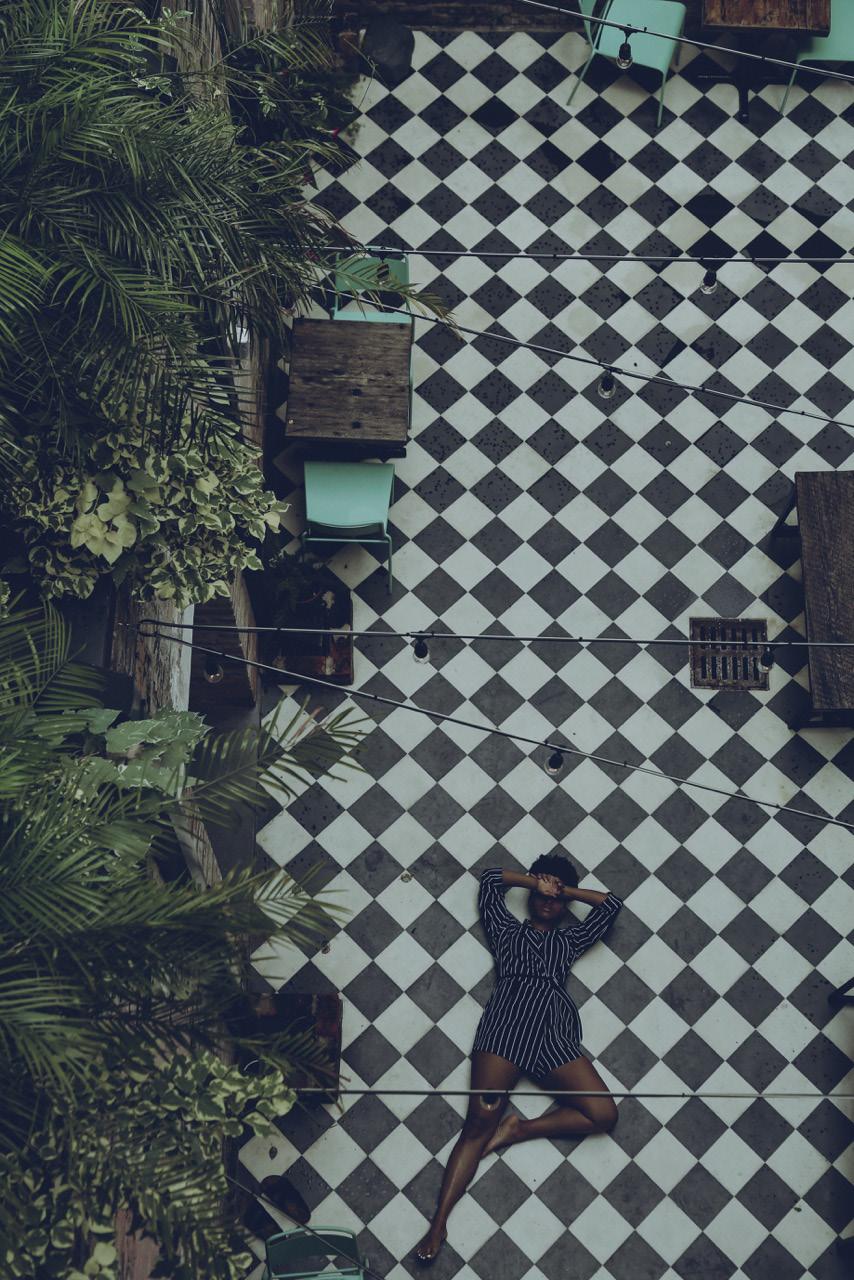
“To Be Soft, Is To Be Powerful”
Photography by Marleigh Flowers
“A few days before these pictures were taken I was inspired by a line from Rupi Kaur, "to be soft, is to be powerful". This shoot, I believe, embodies this line. I aimed to capture the power alongside the softness of each person. Between the incredible bath tub, the swirls of flowers, and the ethereal milk every photo felt like it was straight out of a dream.
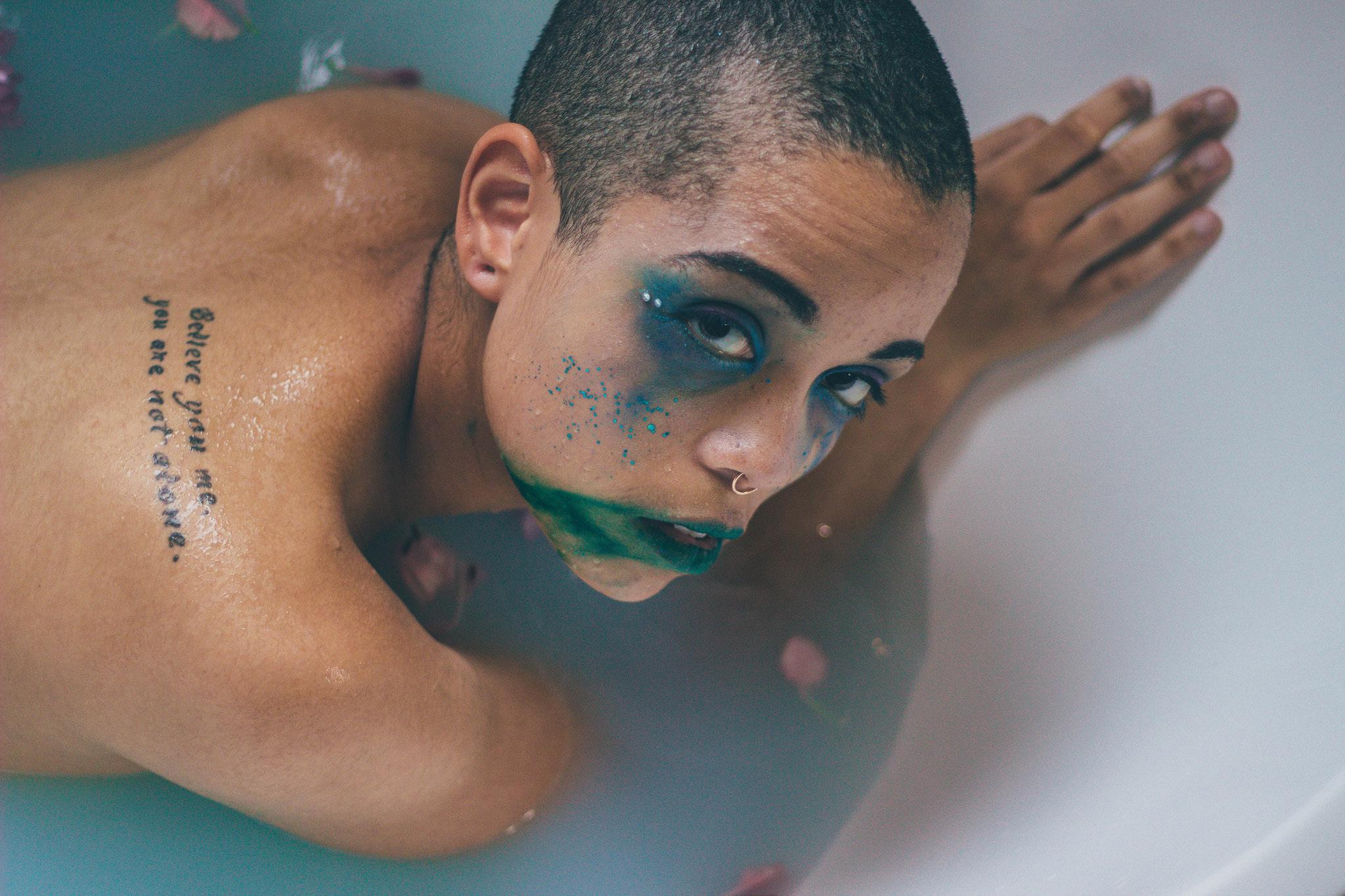
This shoot came about after our celestial week at Camp Gritty, an all girls/non binary camp in the mountains of Tennessee. It is run by the wonderful Charlavail. The focus of camp was on art and empowerment. We had created a space with a lot of love and positive vibes.
After camp some of us were staying in an Airbnb; still very much inspired by the positivity we had just come from. I wanted to do something like this for a long time, but it wasn’t until this moment that everything fell into place for this to happen. As with all my pictures, I do my best to make everyone as comfortable as possible. I try to channel each person’s best self. Despite my own efforts, I was blown away by the confidence that each person emanated on their own. Considering the anxiety and fear of going into a shoot like this, each person found an incredible strength and it is because of them that I was able to take these incredible pictures.”
Marleigh Flowers is a 20 year old photographer from Houston, Texas. She has been doing photography for about 6 years now and is constantly aiming to improve. Her focus is mainly portraiture with inspiration from the wonderful people around her. Her passion extends to photography of live music photography.
To see more images from this photo series, please visit leurmag.com
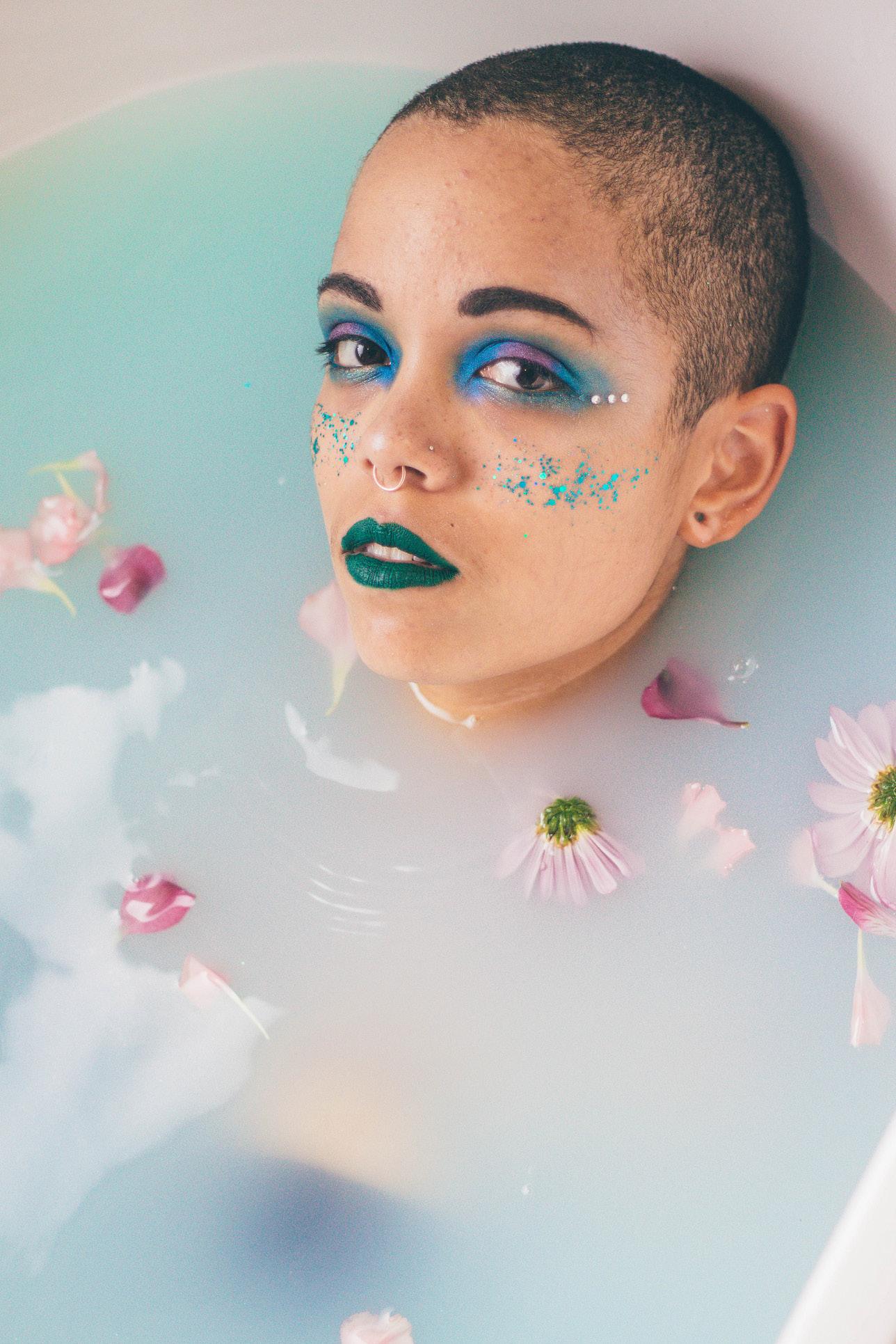
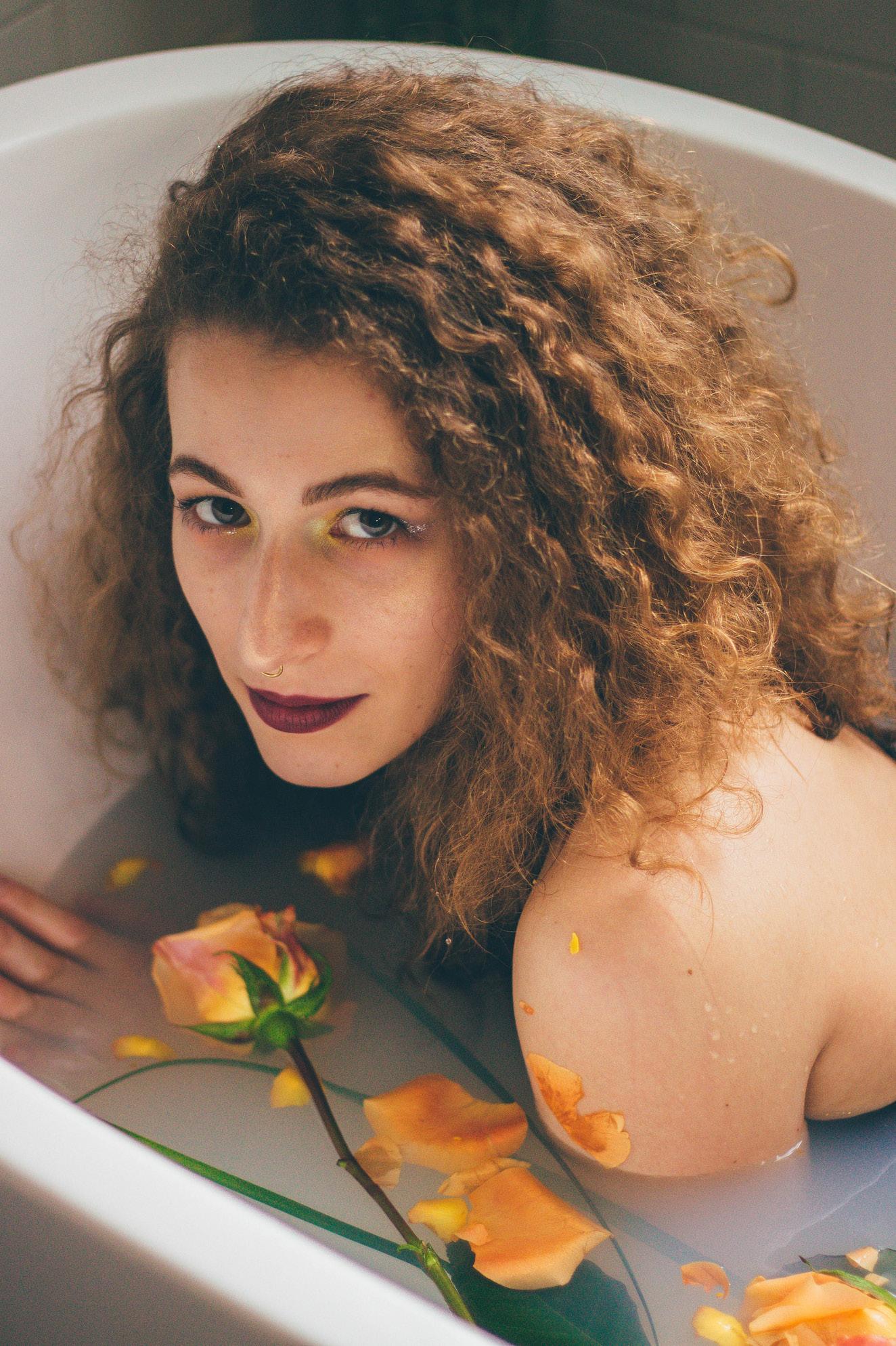
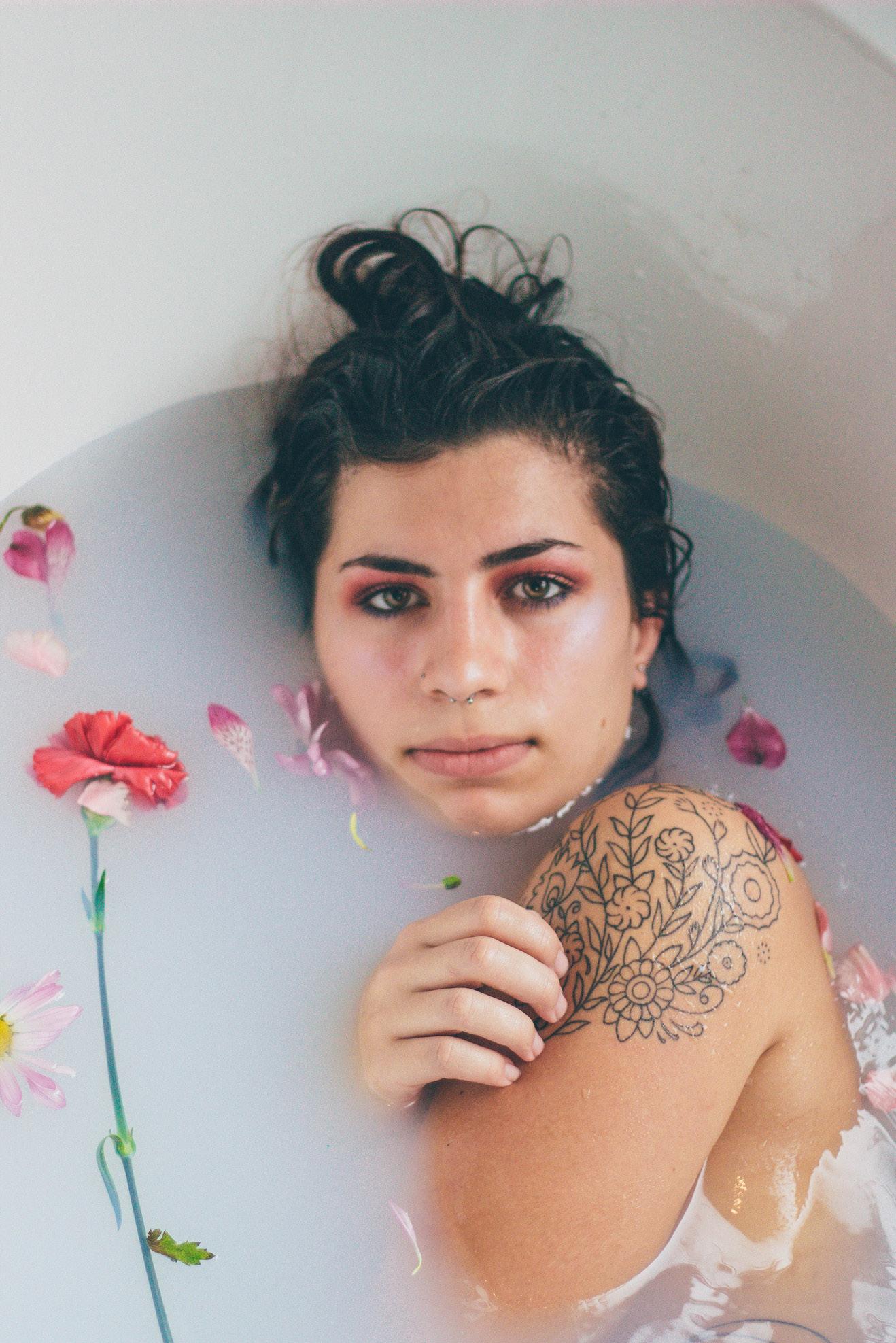
You Set The Pace
You set the pace.
And I followed.
“I love you.”
You said.
I knew it.
And I loved you too.
But I was scared.
You are far more experienced. More confident.
You blog about your exes. A lot. I didn’t like that. But I got over it.
Because you looked at me in a way no one ever has.
We worked and it was out of this world.
We kissed on roof tops and danced in the street. The days blended together. Each day brought something new.
Something to make us better.
“This is going well isn’t it” You posted. And it was.
We were partners. a perfect match. We love the same things. The same shows. The same music.
I love your friends. You love mine. Watching you perform in a crowd. Engage people. Make them laugh. It consumed me.
All I could think about is how lucky I was. To have you.
To be us.
You set the pace. And I followed.
We went all in.
We talked about living together. In an apartment in the garden district. I pictured us strolling the tree lined streets holding hands admiring the houses and talking about our favorite shows.
We talked about marriage and even the possibility of kids.
It excited me because you are everything. This is everything.
We went all in.
I met your parents. You met mine. We did Sunday dinners with yours, and trips to visit mine.
Everything worked.
Except it stopped. things changed. The fighting started. It’s easy where it counts. Right?
For a little. Until the fighting got worse.
I can’t talk to you because you don’t hear me. My feelings. My side. All irrelevant to you. It sucks. It hurts. Because you used to.
“I love you” felt empty.
Holding your hand became a chore.
My stomach in permanent shambles. You looked at me and I felt pain.
Sadness.
Empty.
You pretended to still love me. But I knew.
As your blog says: There’s somebody else. “it’s you.”
The fights were so big because the stakes were so high.
Each time you looked at me I felt the knife twist.
Deeper.
And deeper.
Each text message an investigation or ammo for the next fight.
I had to have my points ready for the debate.
But I never gave up on us. I fell on my sword over and over.
And I came back to you time after time. Begging for you to take me back. Because I love you and that is what you do.
But you didn’t return the favor.
You pushed me away again and again. The fights became normal. You nitpicked me to death.
Or at least it felt that way.
But I still showed up for you. Because I love you.
We were going to live together. In that apartment tucked in the magnolias.
But you planned to move away... without me.
You set the pace. And I followed.
“He still loves me right.”
The fighting got worse.
My body hurts. I feel like I lost you. It feels like you are gone.
I can’t focus. I can’t eat. I can’t do anything.
You left me. And I am sad.
On one hand relieved. Maybe I can put myself back together.
Except the thought of you not here kills me. My partner. My friend.
When you dumped me. I sat there. I didn’t know who to call.
You’re the one I call. When a day was bad. You cuddled it all away.
But you are gone.
And I’m lost.
Your side of the bed empty.
Your toothbrush in the cup.
Your belongings where you left them.
And me. I’m here.
Why can’t you come back?
You set the pace
And I followed.
Now you’ve ended it.
I’m alone. And sad.
I want you to come back with every fiber of my being.
I love you. Except. You’re hurting me.
Posting blogs about loving old flings and exes. Some of which overlap with us. Overlap with meeting my parents. Overlap with our time.
I know it’s your outlet but don’t you see? It hurts me.
Are you doing it on purpose?
Trying to get a few last twists in there?
Where is my partner. My love? My tiny?
I’m alone. I’m hurt. I’m Confused.
“I’ll call you when I get back from my trip” you said.
But I have a feeling there is no happy ending. Because you gave up. A while ago.
Back when your looks felt empty. And you withdrew your affection. You emptied our account. You left me broke, sad, and alone.
You said it yourself.
You can’t give me what I need. But you could if you tried. If you really really tried. But you won’t.
Why not?
You set the pace.
And I’m following.
I still love you. I hope you know. I’ll do this until the fat lady sings. Because I believe you’re still there. I believe you have hope for me.
For us.
You can make a deposit into our account. You can deposit whatever you have. I’ll take anything I can get.
So we can go back.
Back to the days when we danced in the streets and kissed on rooftops.
Back to when you tear up saying I love you.
Back to when we compromised not competed.
When we went on dinner dates. Held hands. And dreamt of apartments in the garden district.
Because that is what gets me through this.
It’s just me holding your hand. Beneath the many magnolia trees. Thankful for my partner. My love. My tiny.
You set the pace.
And I’m waiting.
Hurting.
Dreaming.
Edward Schneider is a designer and brand strategist living in New Orleans. He is a founding partner at Bonobo, a brand studio operating in New York | LA | New Orleans. In his spare time, Edward sips champagne with his boyfriend who spoils him (and no, he does not set the pace).
Edward Schneider
Gendered
Tiggy
Spray
Expression
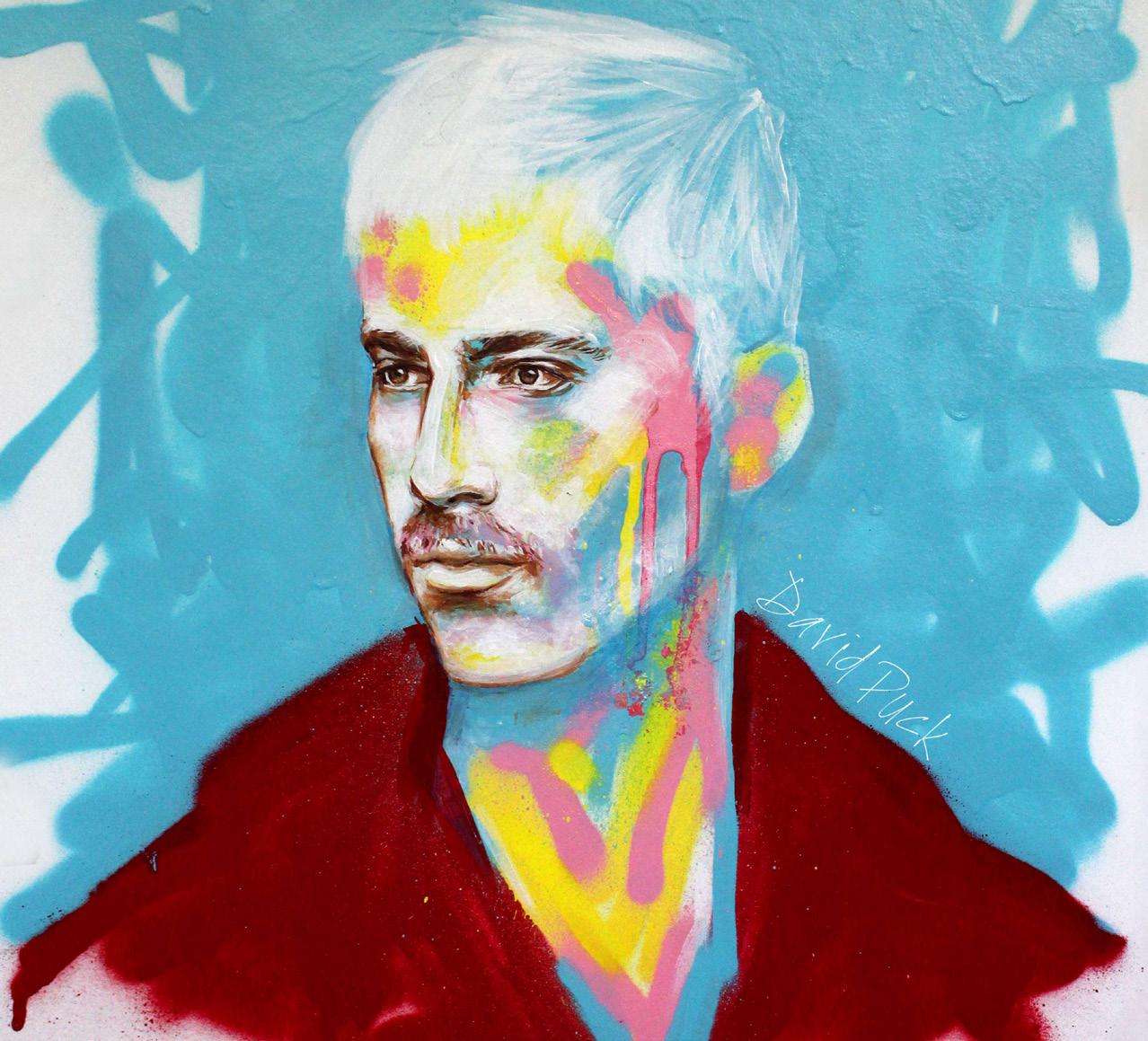
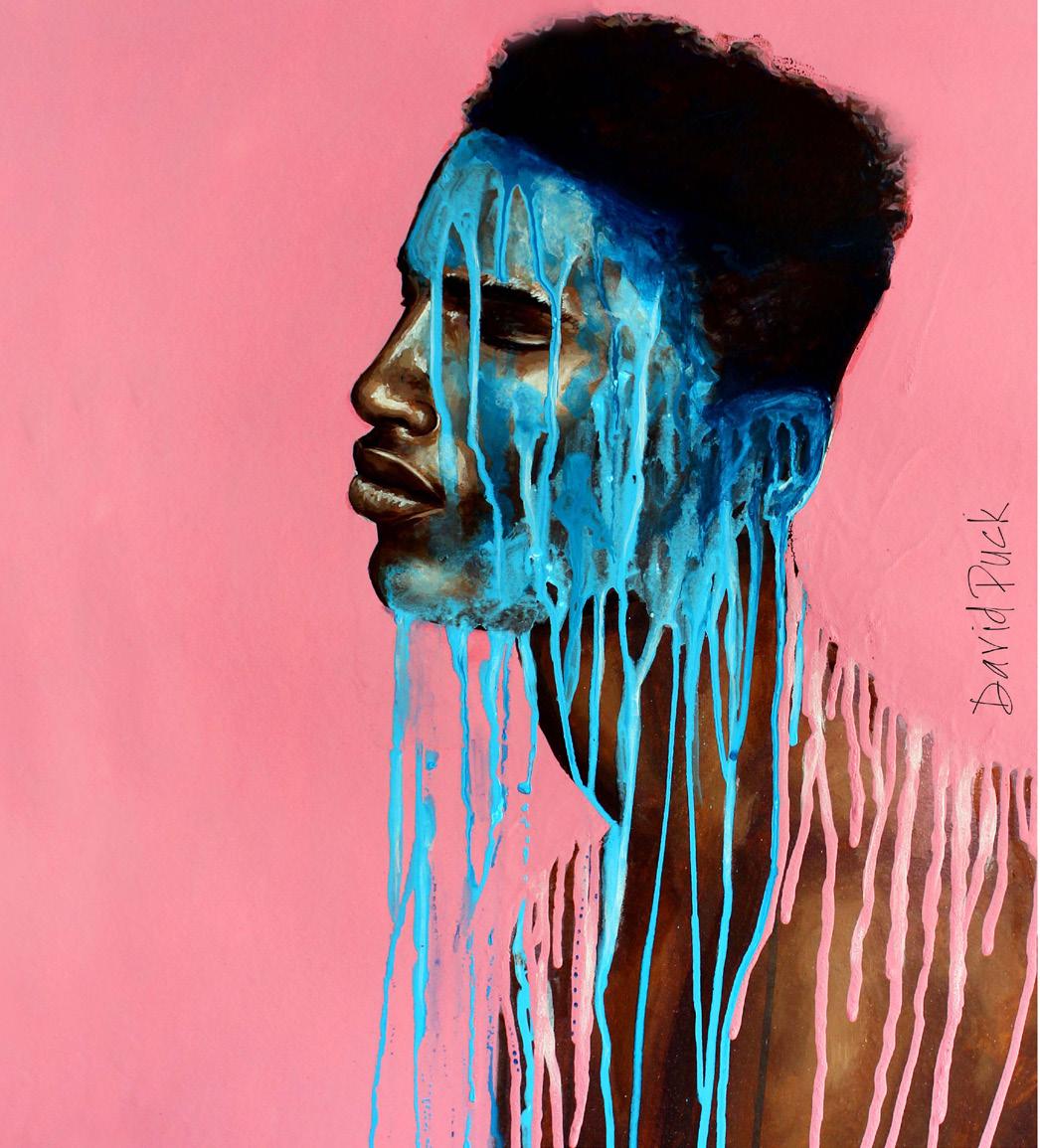
Spray
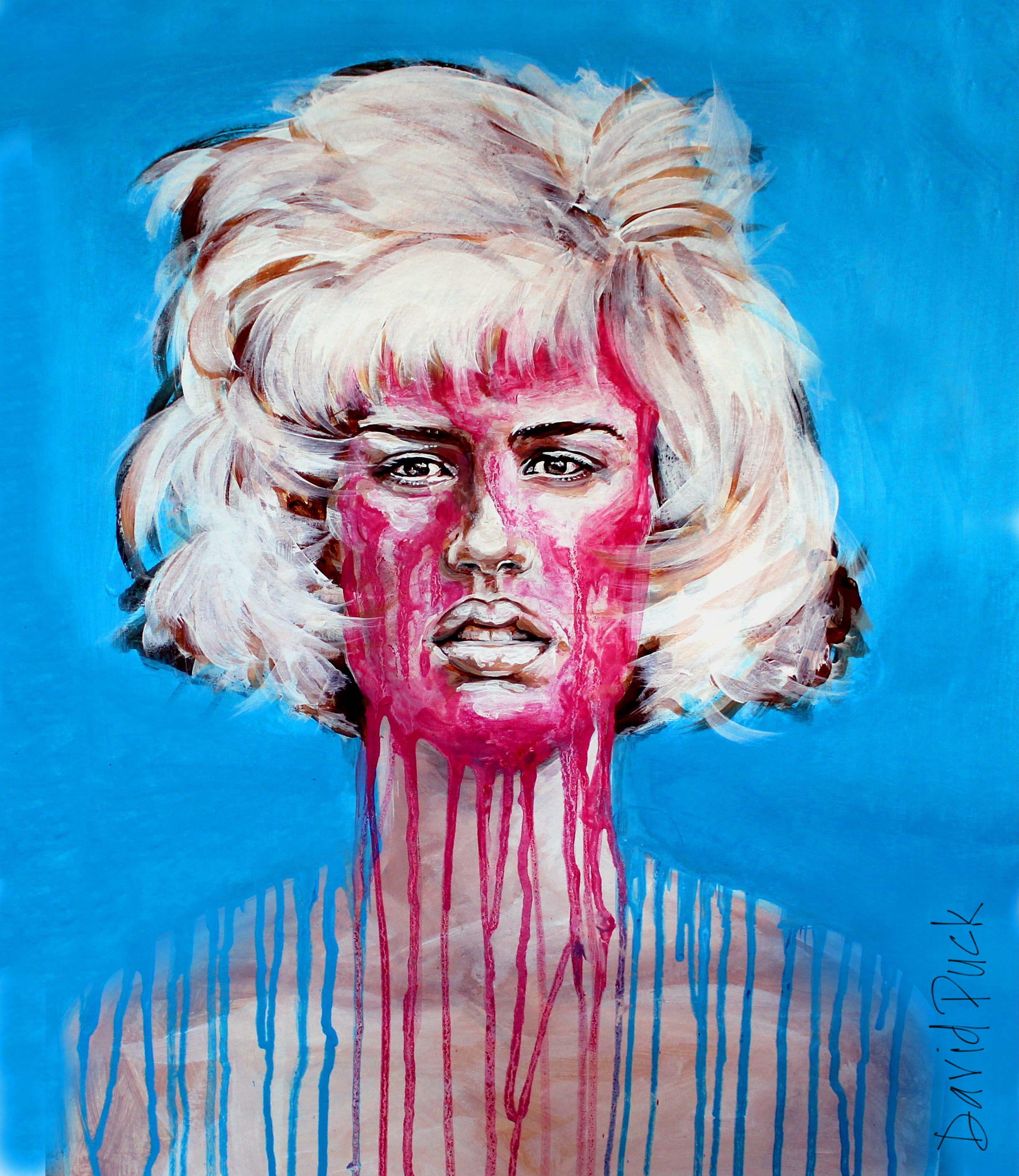
Colour I & II Spray paint, Acrylic, on paper, a1. ‘Pink is for girls, blue is for boys’. Gendered Colour I&II questions western society’s construction of gender binary, roles and its effects. Colour washes down the face like blood, sweat or water. Pink is for people, blue is for people.
Thorn
paint, Acrylic, on paper, a1. Tiggy Thorn is a club kid visual artist based in Paris, France. Their work uses graphic geometric painted shapes and cut outs on their face, combined with plush-toy based clothing. Tiggy is painted here in their human form - face clean, pose demure, but still with creative vitality bursting through the colours of their skin.
paint, Acrylic, on paper, a1 Expression captures the conflicted duality of queer identity and life navigation - part pride celebration, part isolated melancholy. To see more images from this artist, please visit leurmag.com a. b. a. b. c. c. d.
Meghan Saas
Art
“I am currently a graduate student at LSU studying graphic design. I’ve lived in seven states so far, and Louisiana is by far the most conservative place I’ve lived. Feeling somewhat out of place here has had an effect on my work, and I have begun to give voice to my frustrations through the art of books. My artistic practice focuses on alternative book design and viewer interaction. Using techniques
based on traditional Japanese book binding and origami, and incorporating inspiration from game design, I make books that allow for the viewer to take an active role. Conceptually, my work addresses feminist themes, seeking to educate and empower people on issues like menstruation and clitoral anatomy. I choose to work in book arts because the book is the perfect vessel for word and image, allowing for

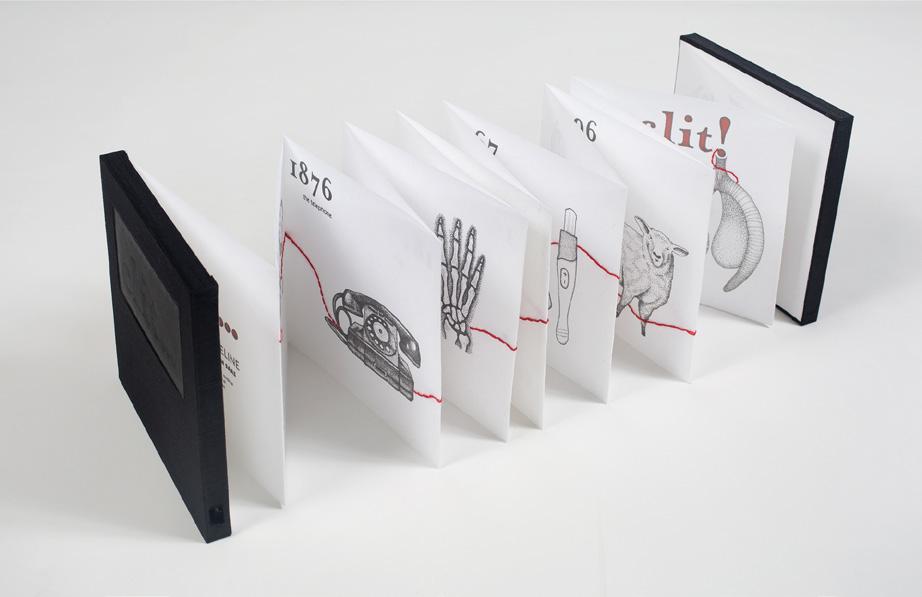
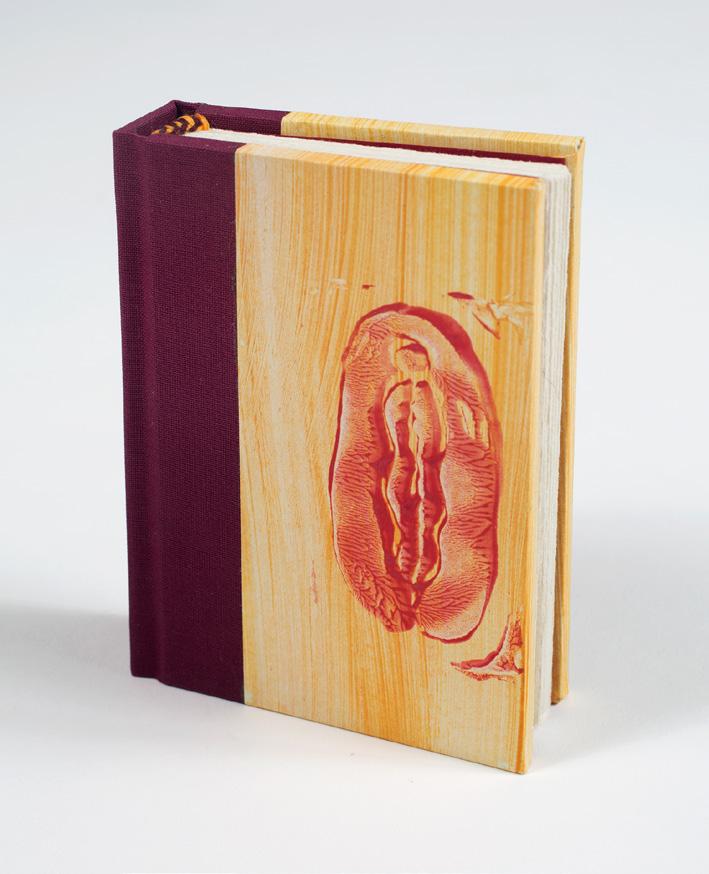

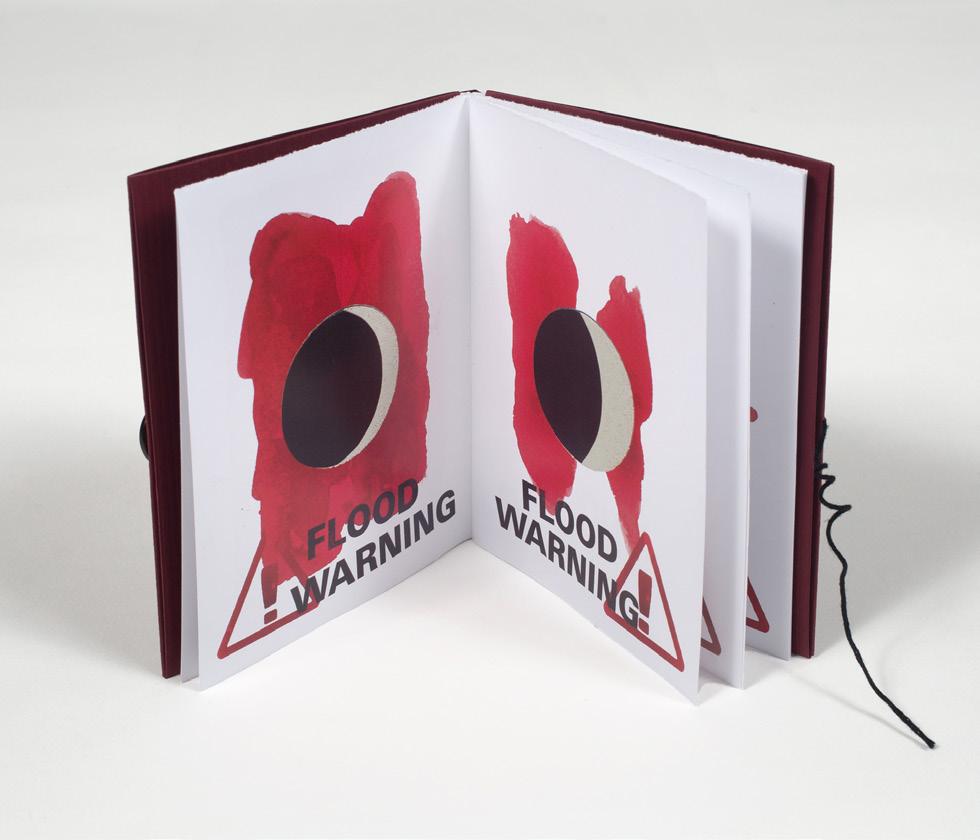


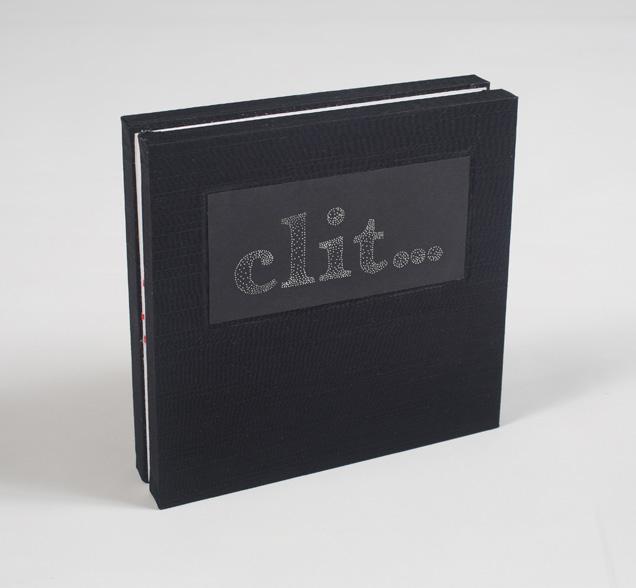
a longer and more intimate viewer experience. Books also allow me to merge digital and hand-made processes in an organic way. When I’m not making art, I work with the National Organization for Women, fighting for the right to reproductive freedom here in Louisiana. I believe that bodily autonomy is gravely threatened in this country, and my artwork seeks to address that issue from
various angles. While my recent work doesn’t specifically address LGBTQIA+ issues, I believe the concept of bodily autonomy is essential to LGBTQIA+ rights as well. As a bisexual woman living in the deep south, I know it’s important to keep fighting for the rights of women and of the LGBTQIA+ community. My art is just one of the ways I’m fighting for those rights.”

Book
Photos by Kevin Duffy
d.
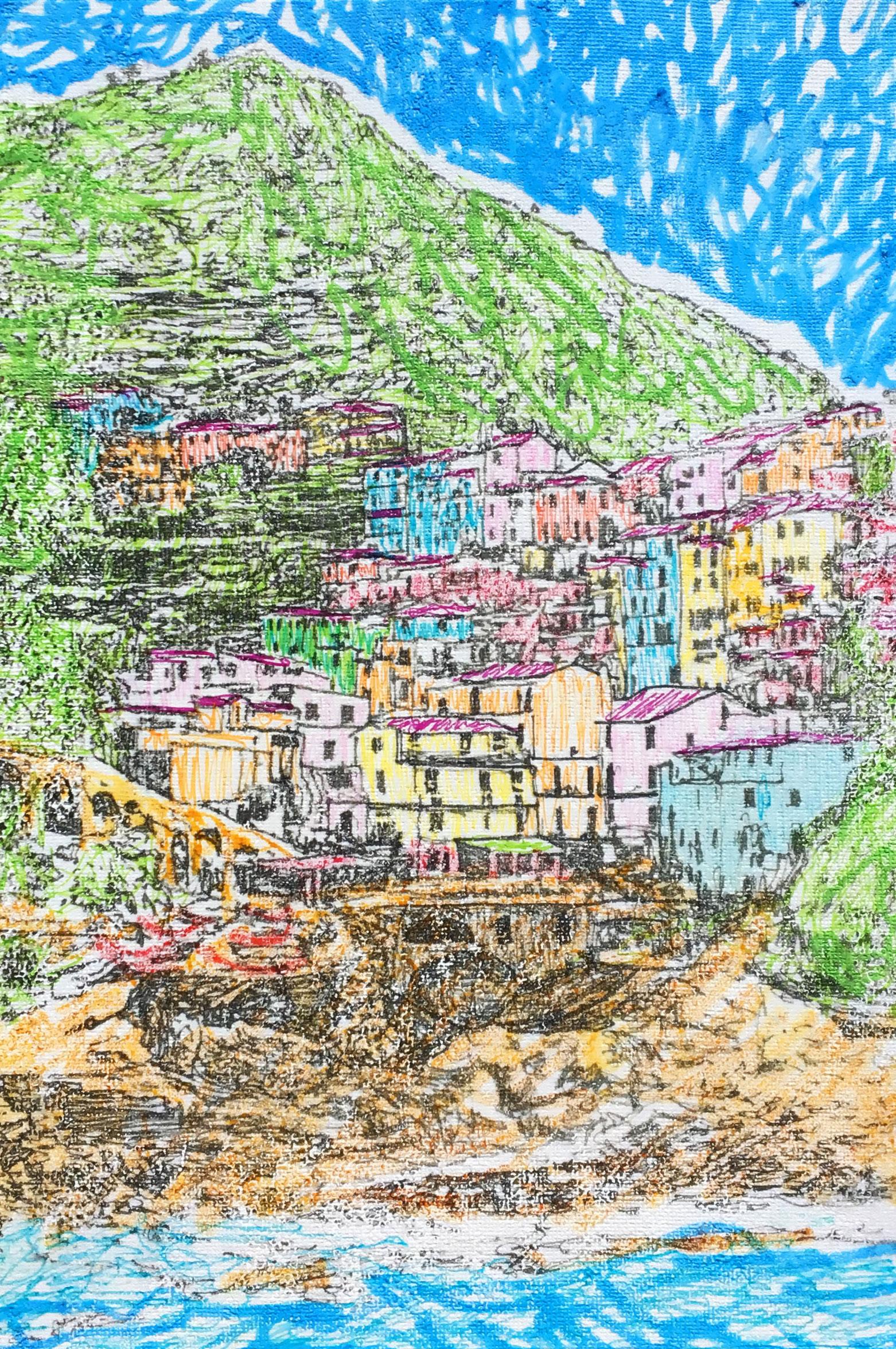
Visit leurmag.com for our full interview with artist David Brookton.
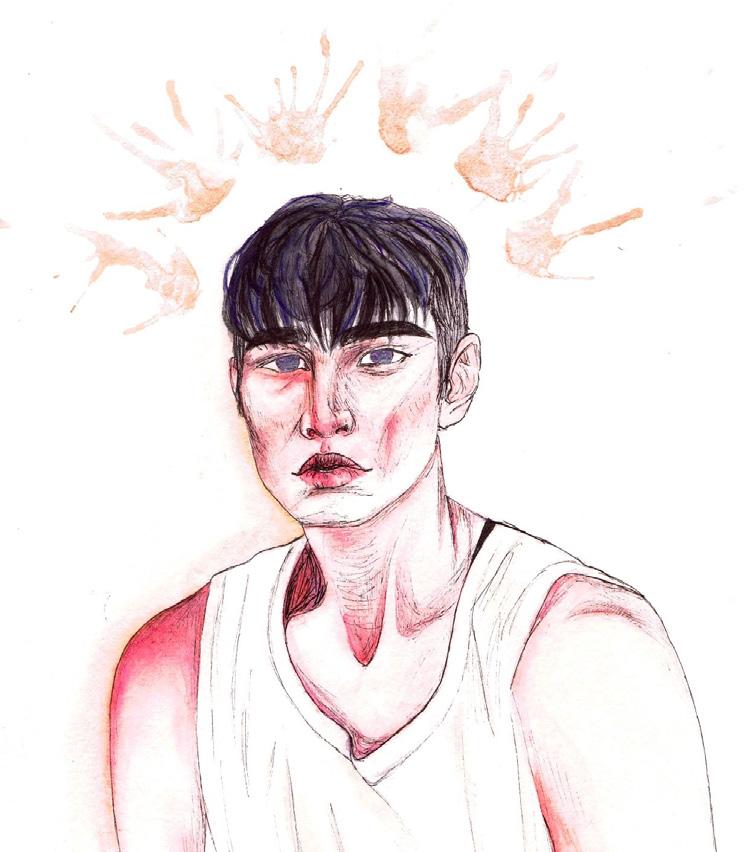




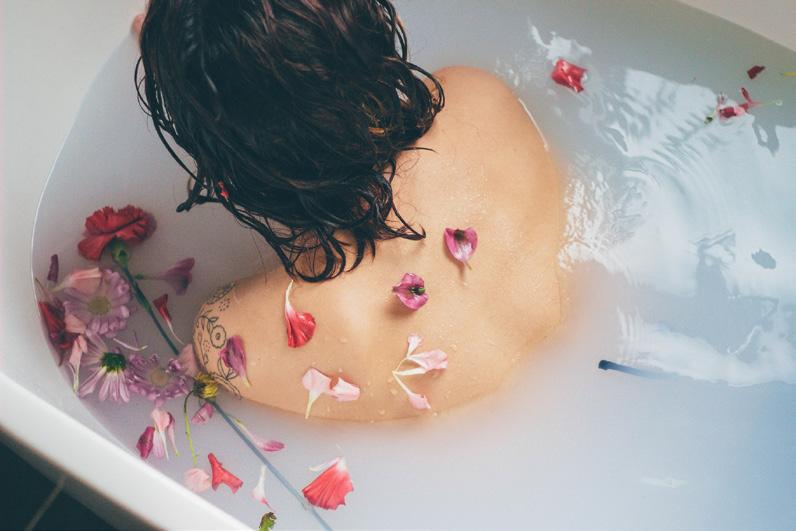

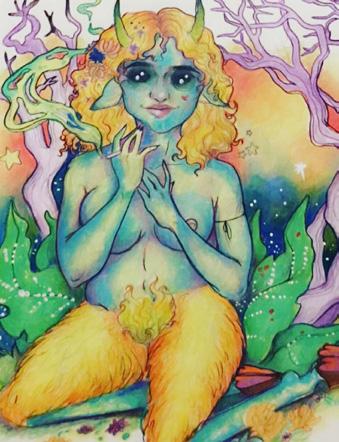


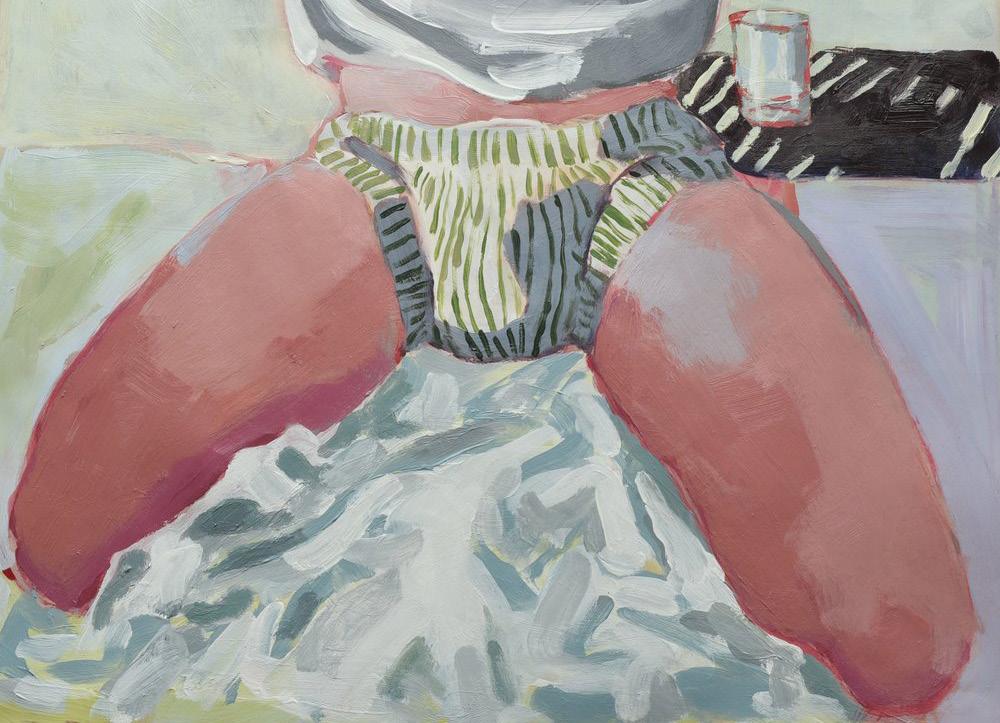
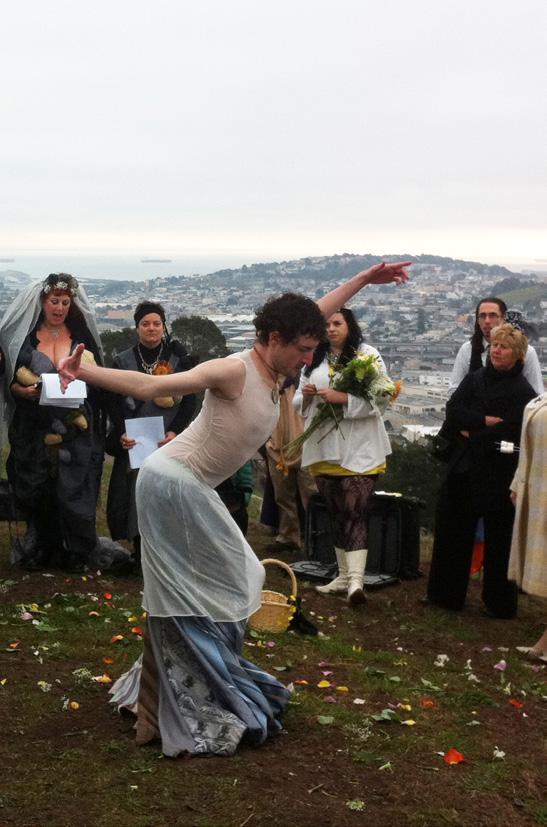
visit leurmag.com for full stories + additional content
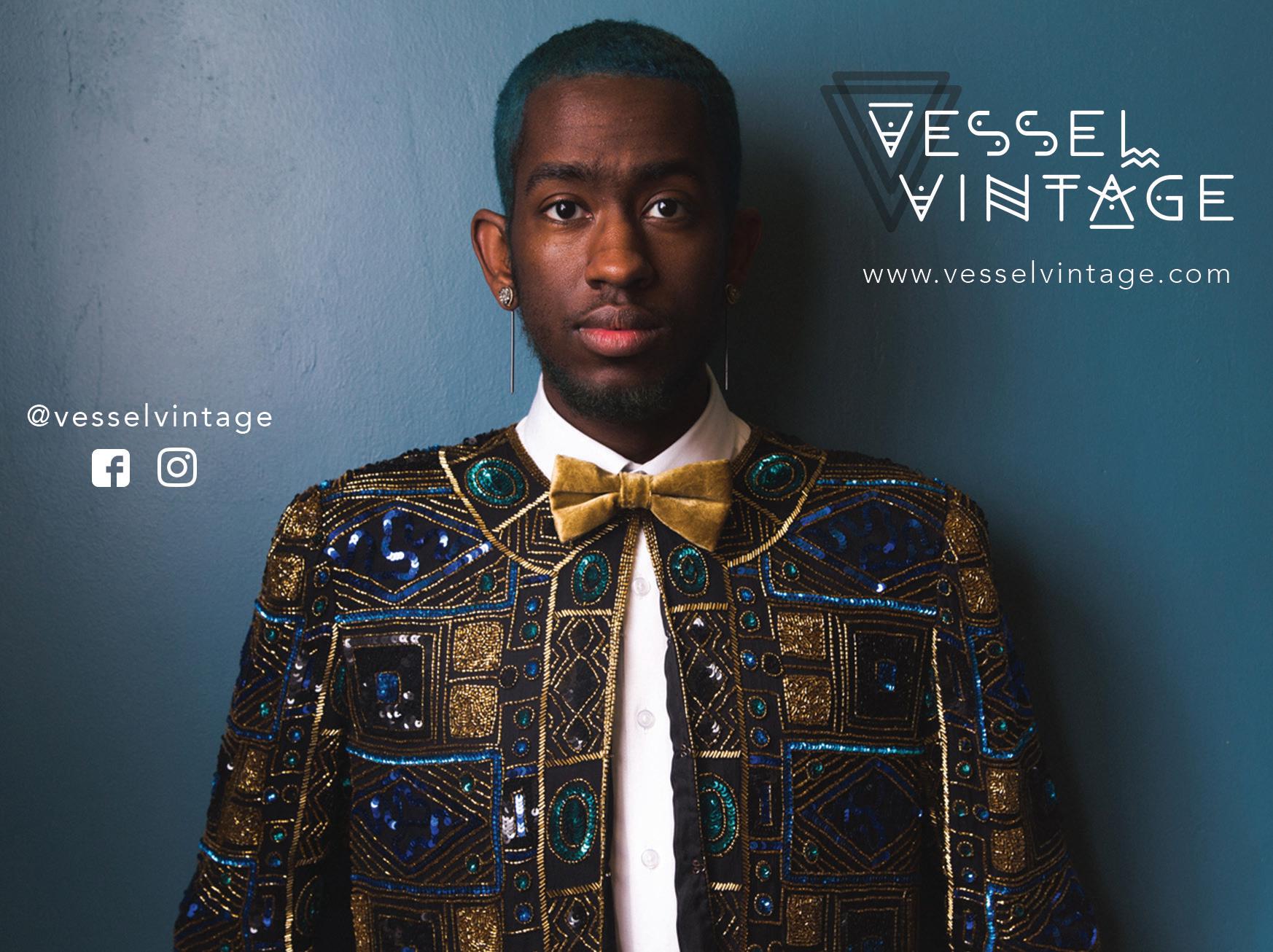
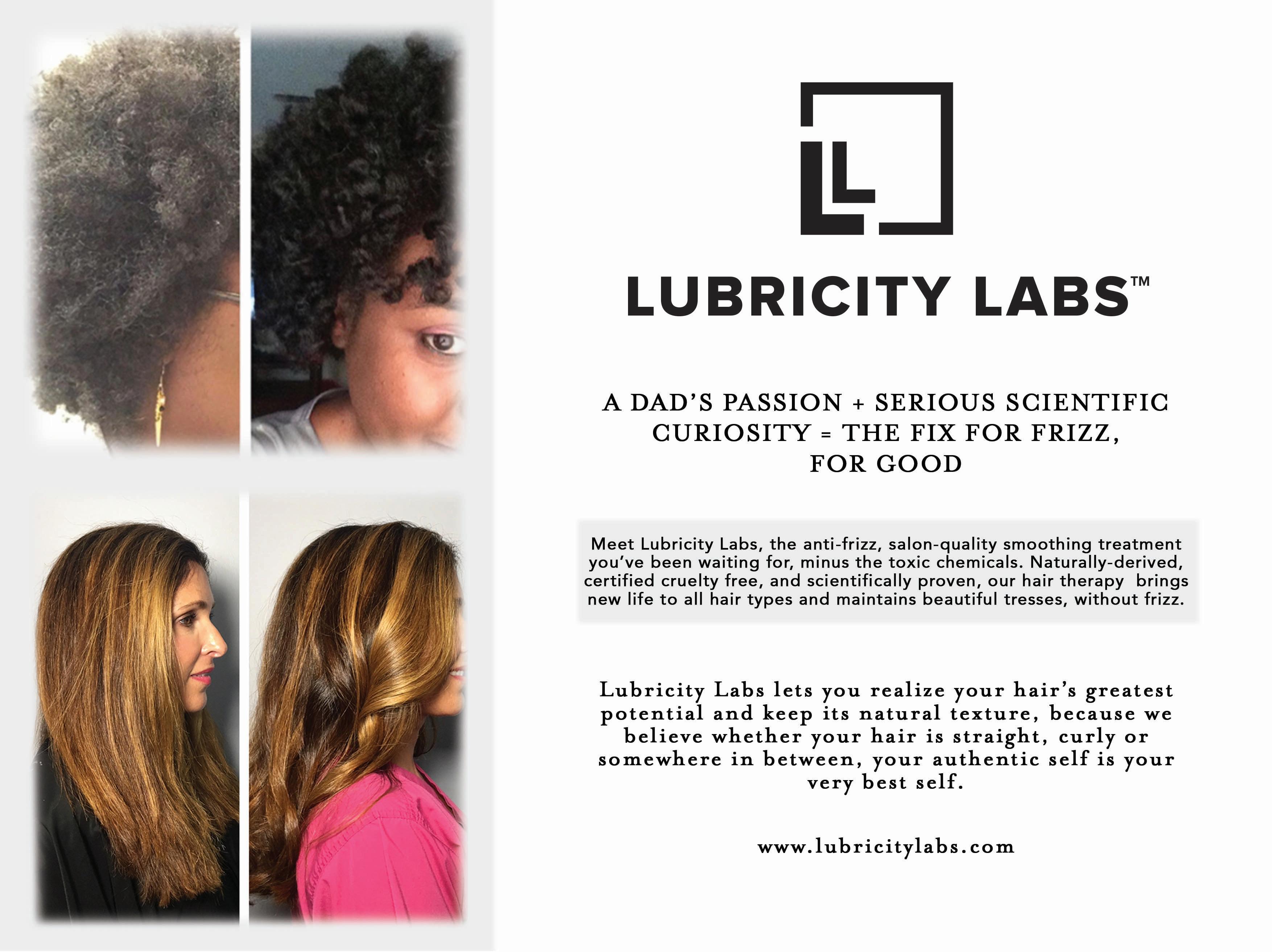



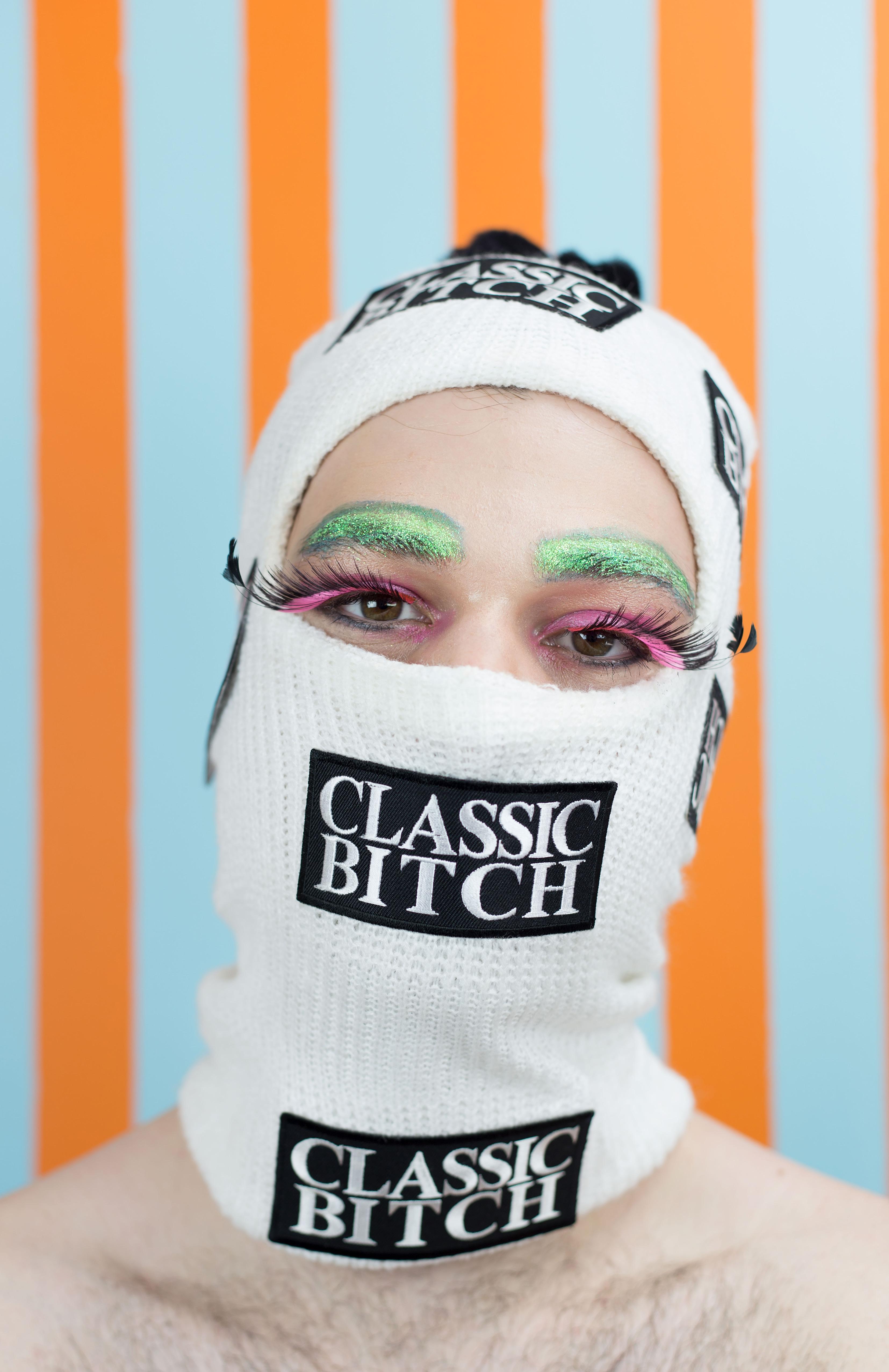


 Photography Series by Jeanette Nevarez.
Photography Series by Jeanette Nevarez.














 @mattingsworth
@mattingsworth





















































